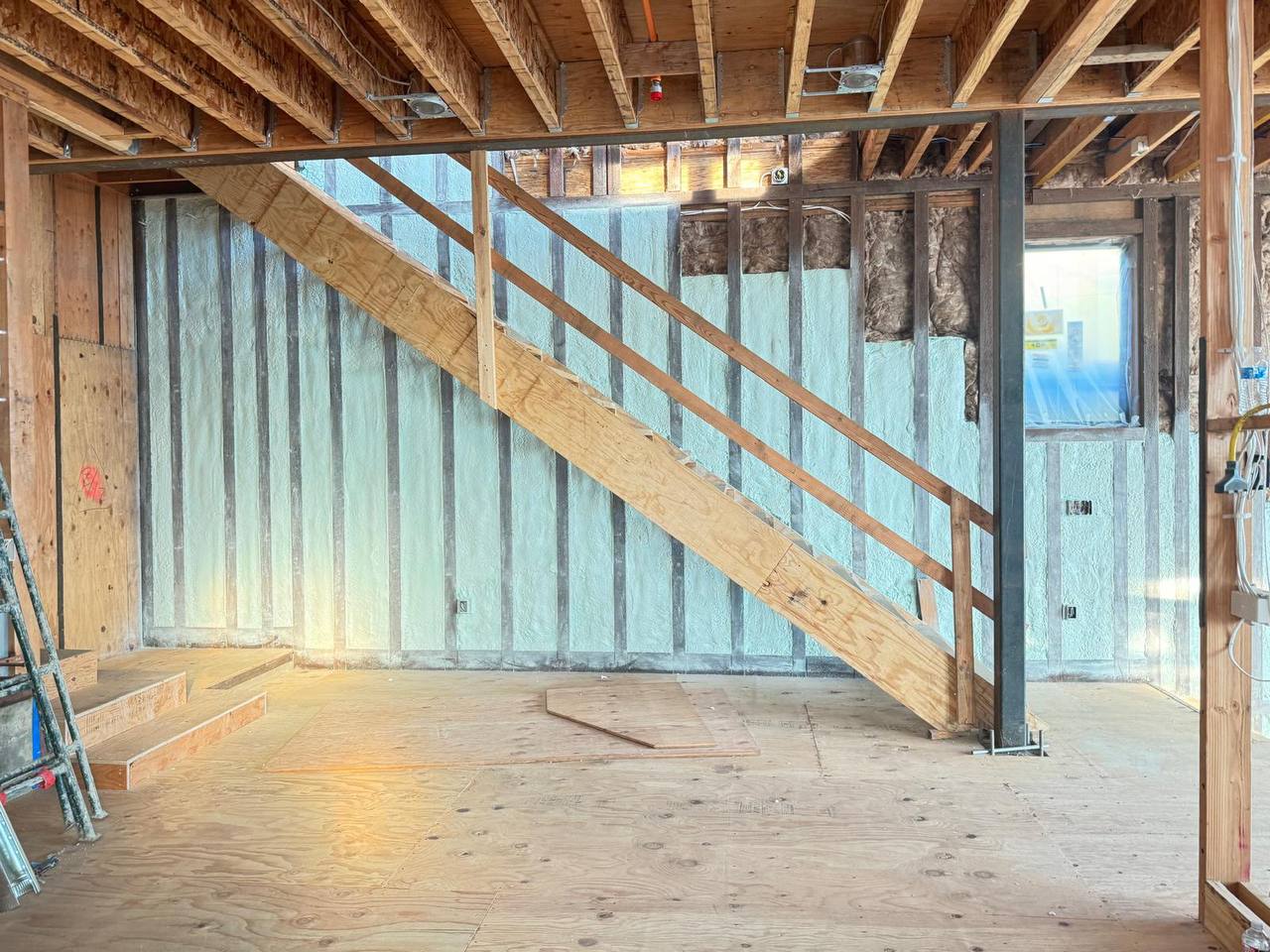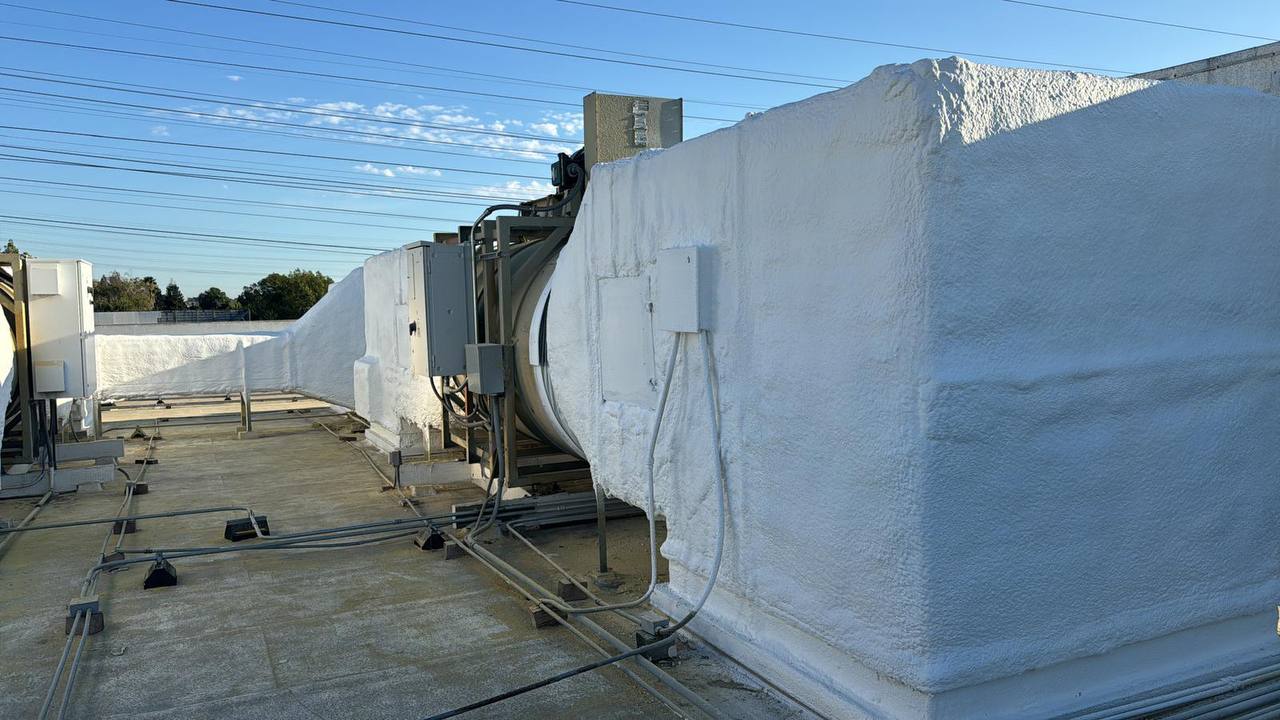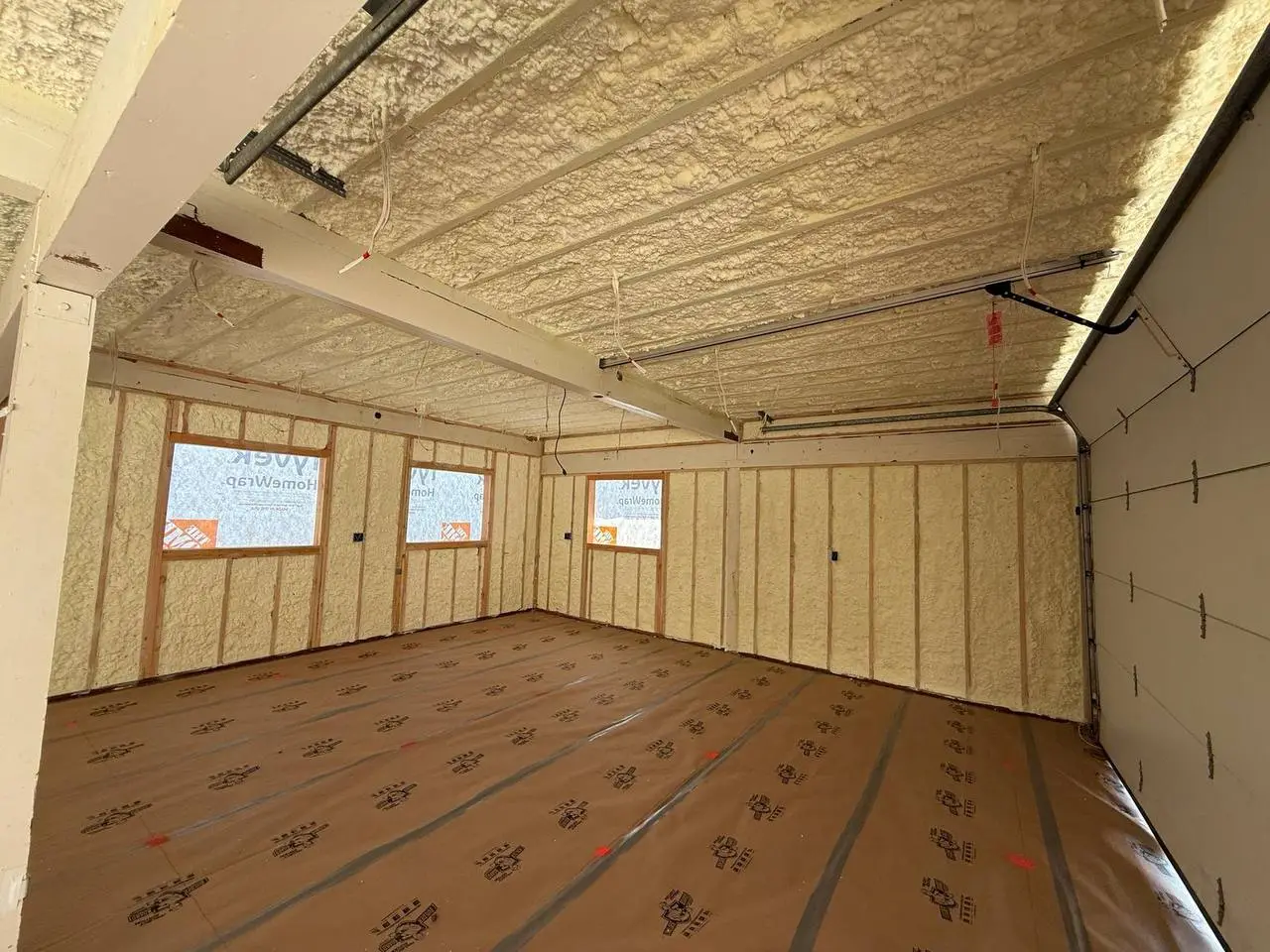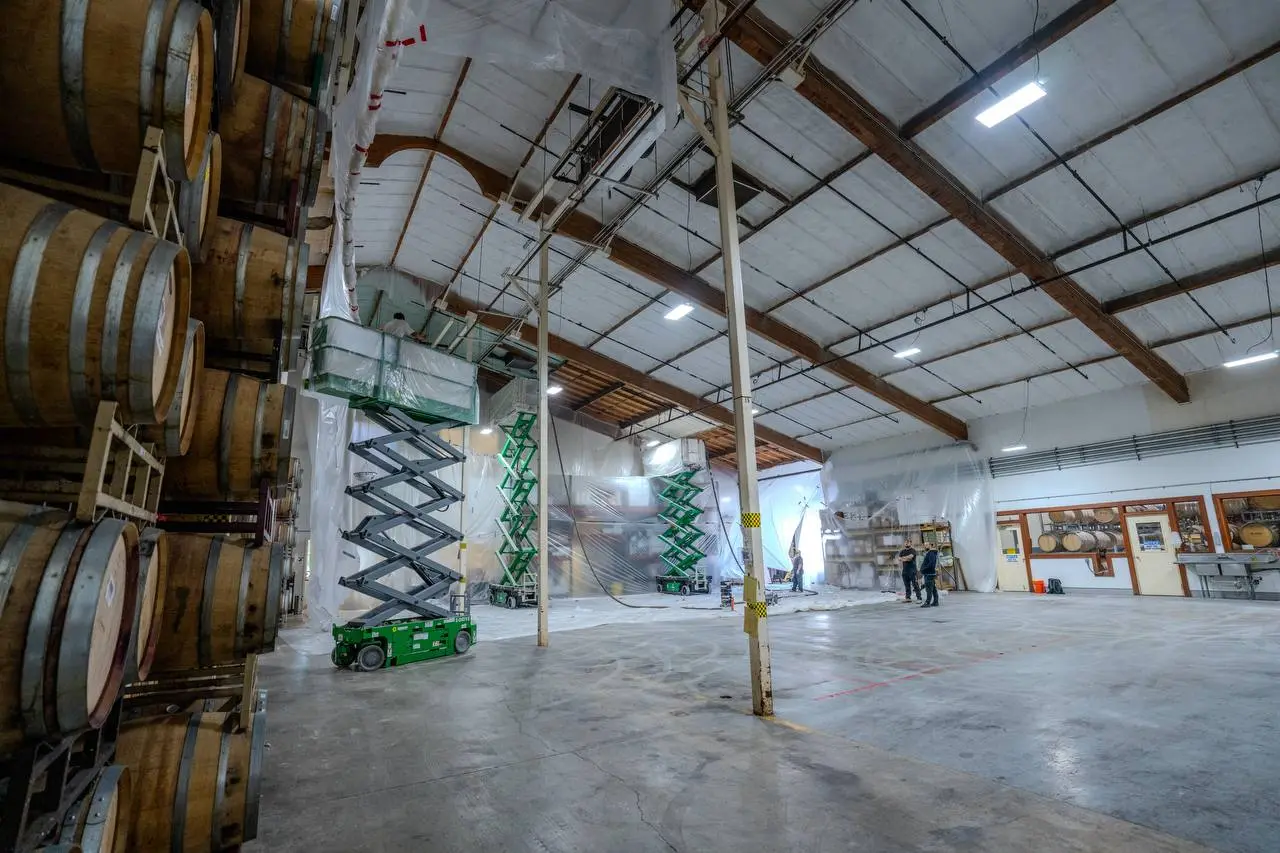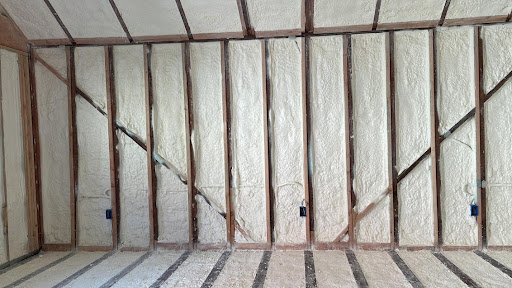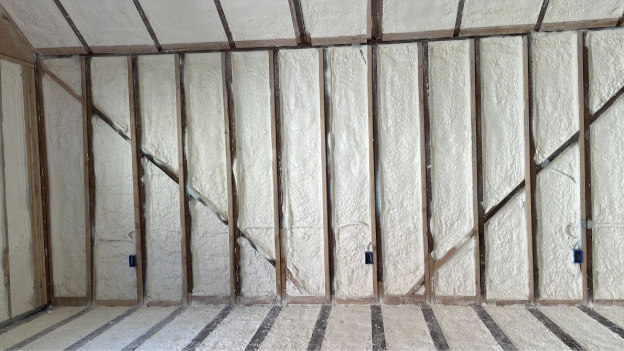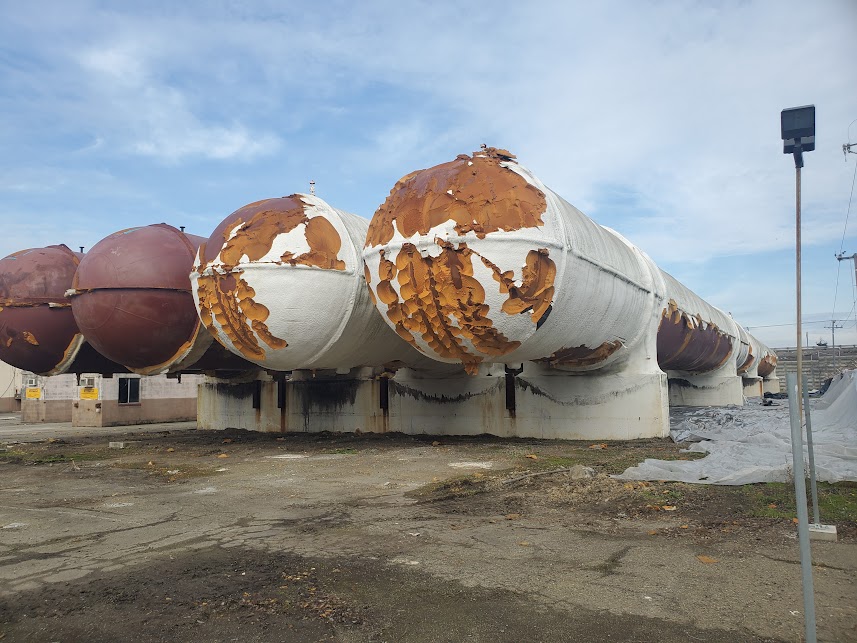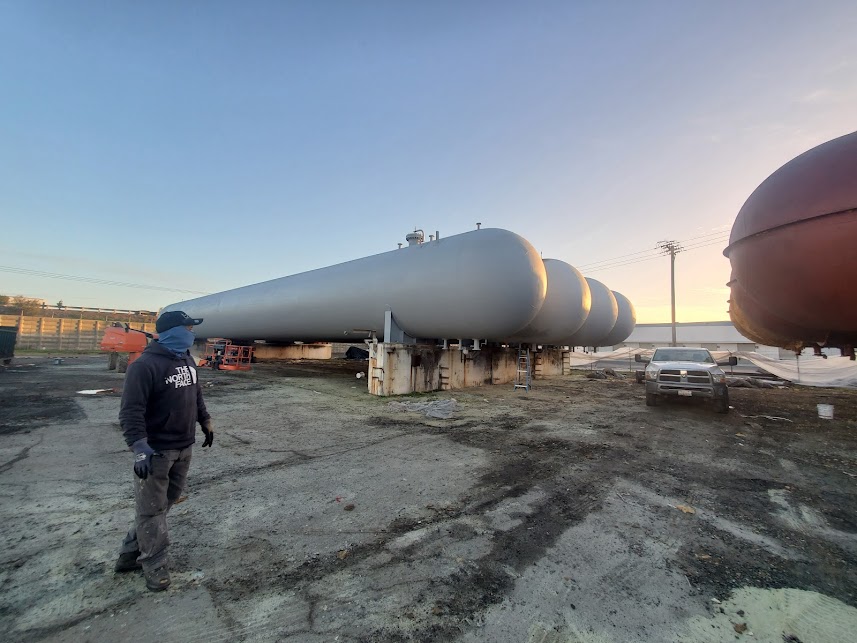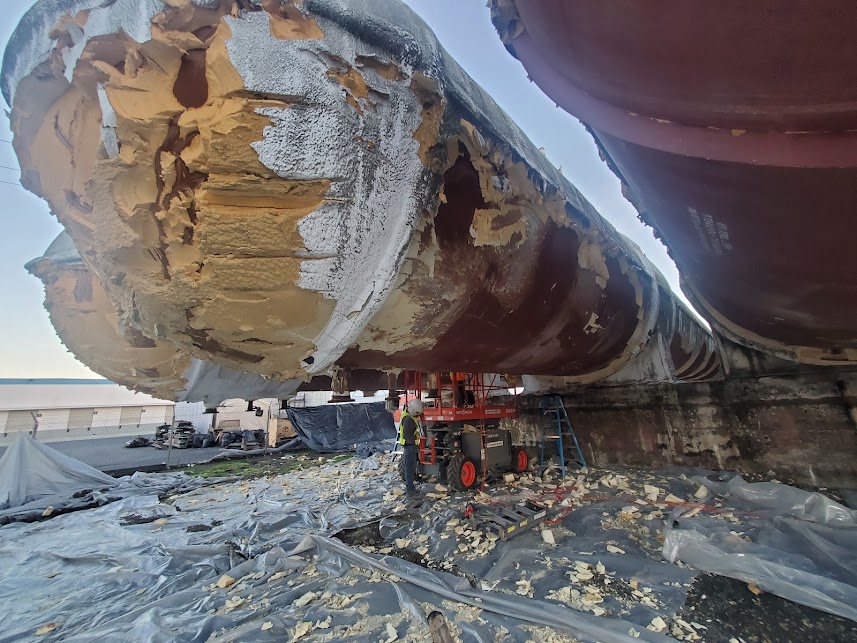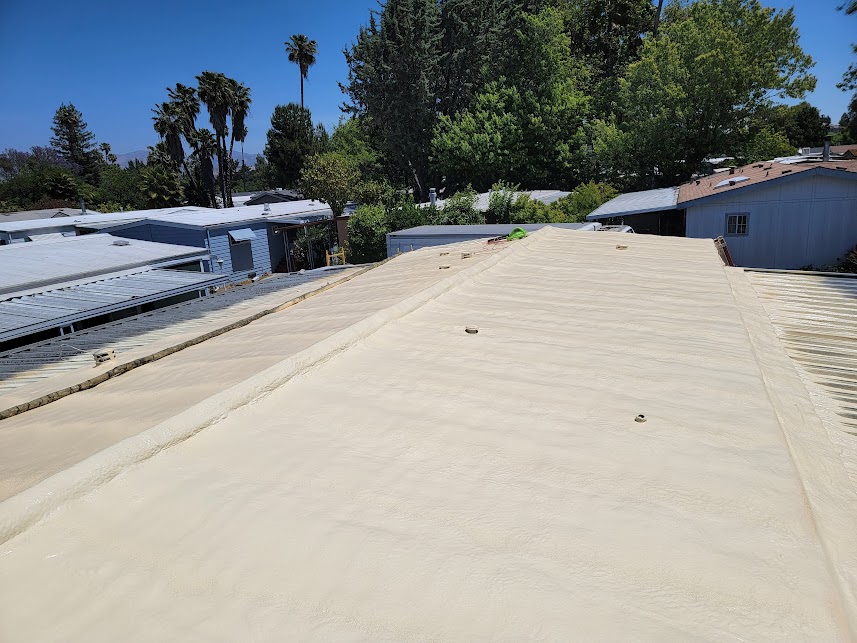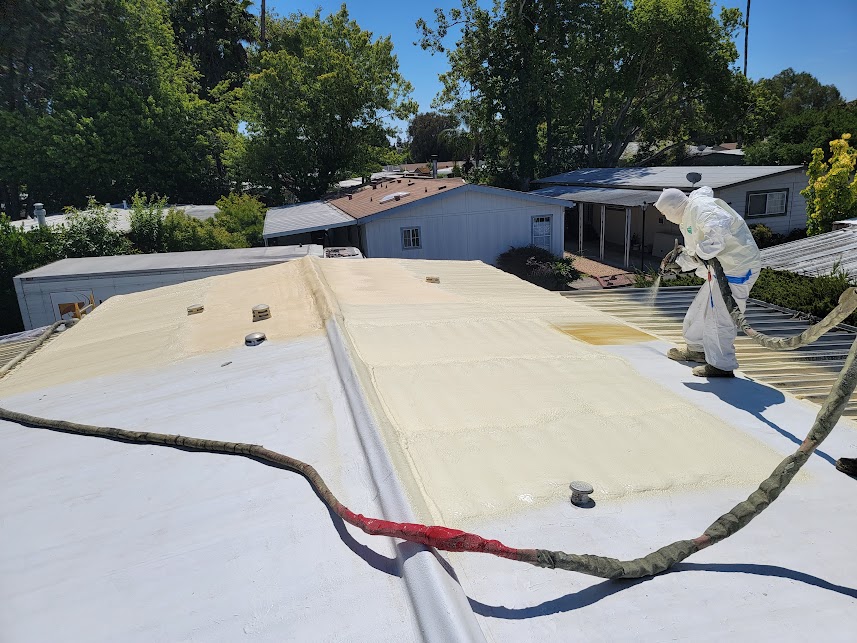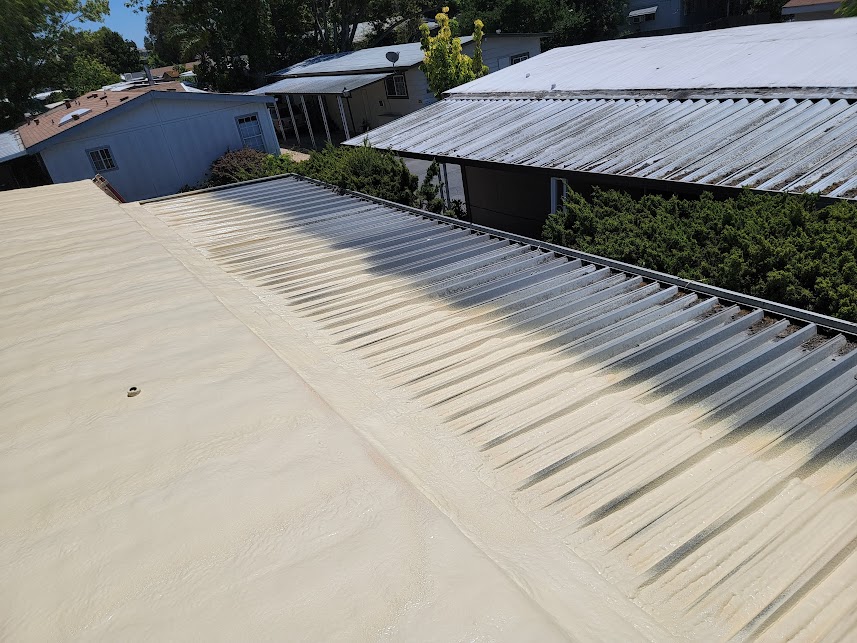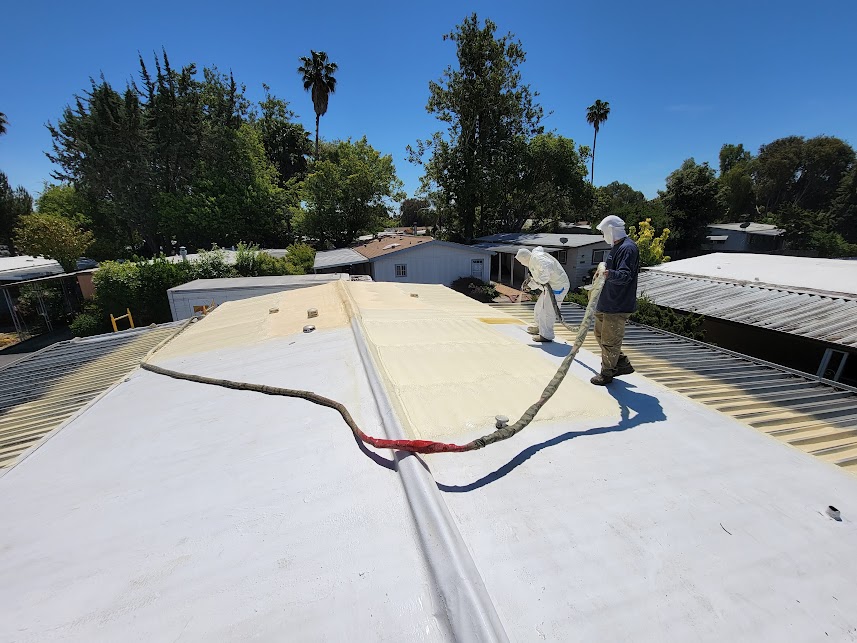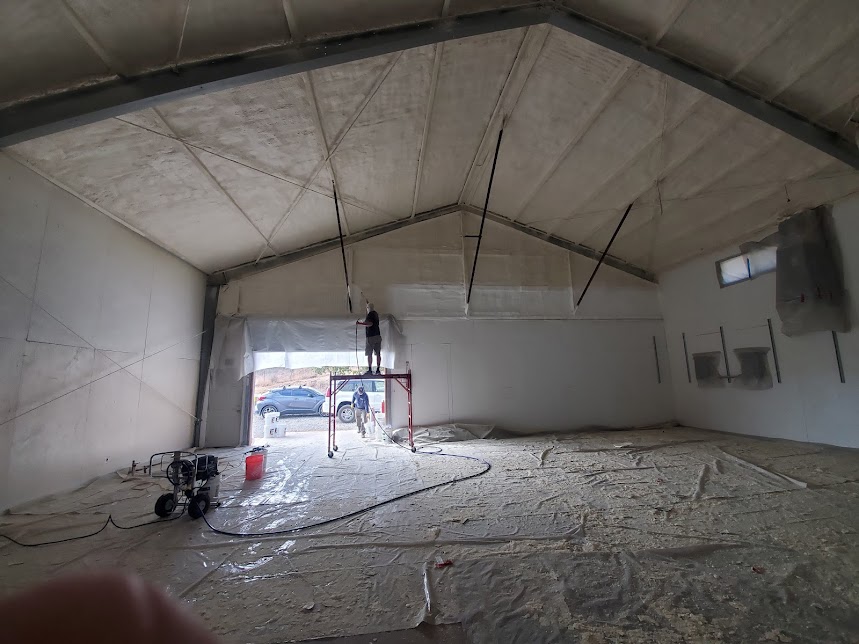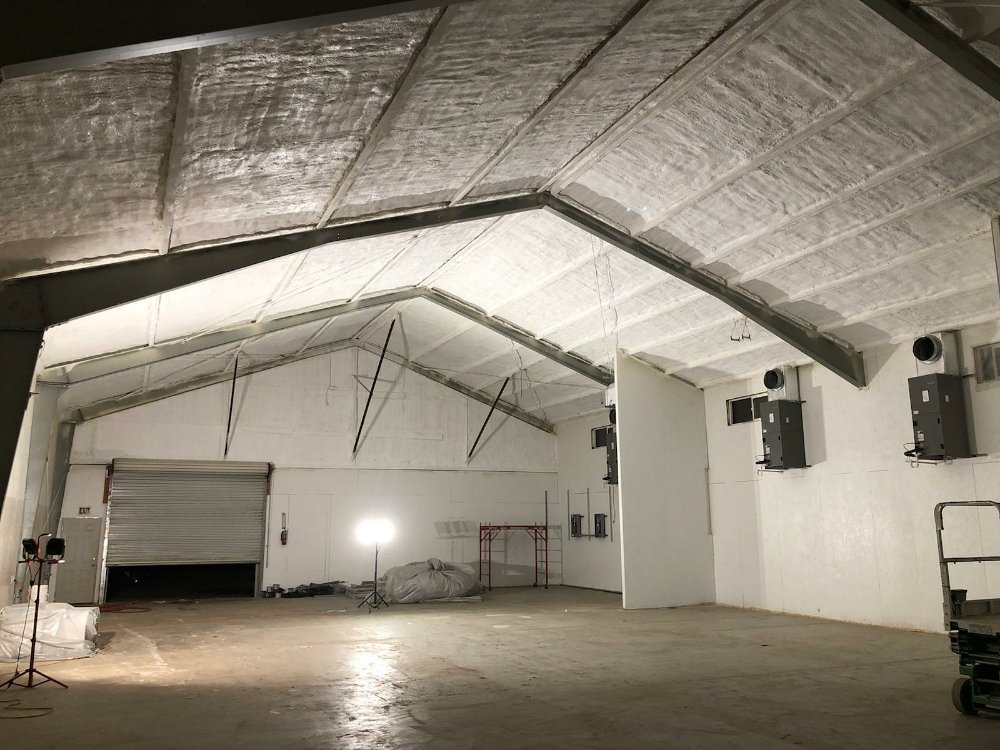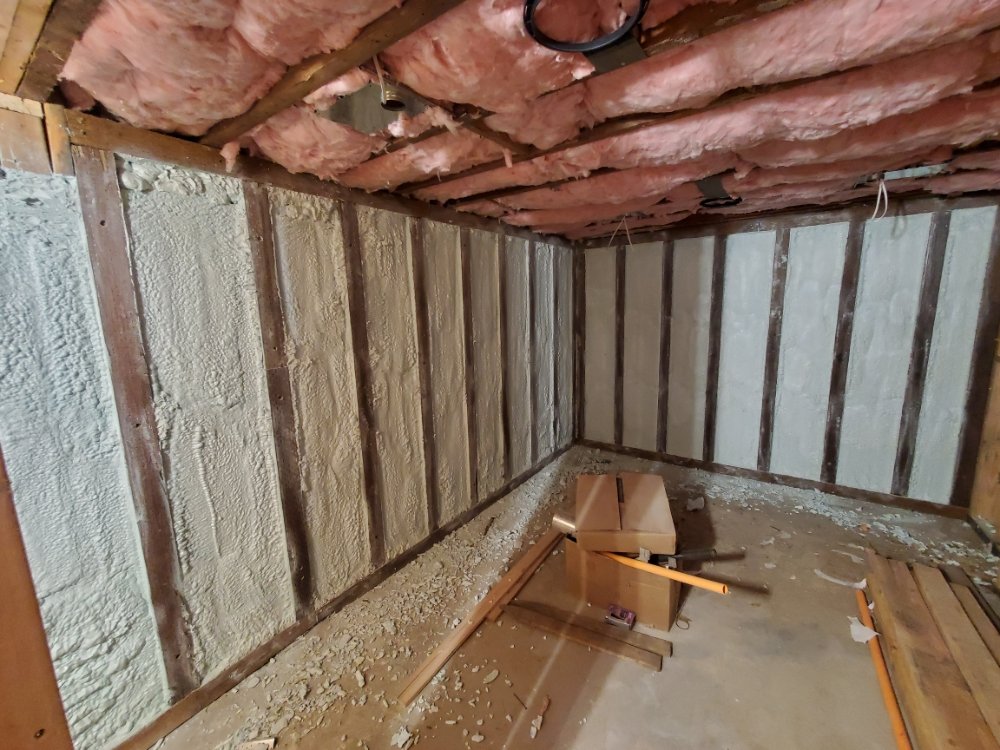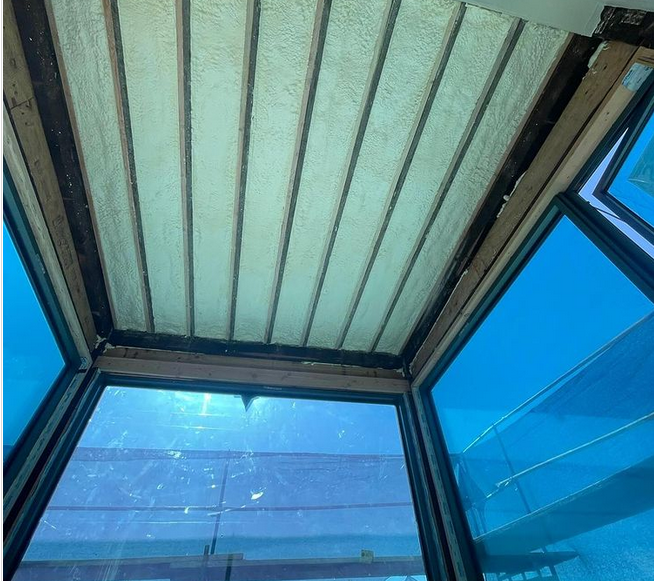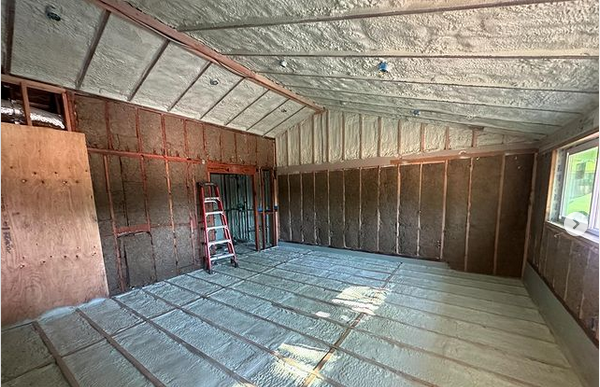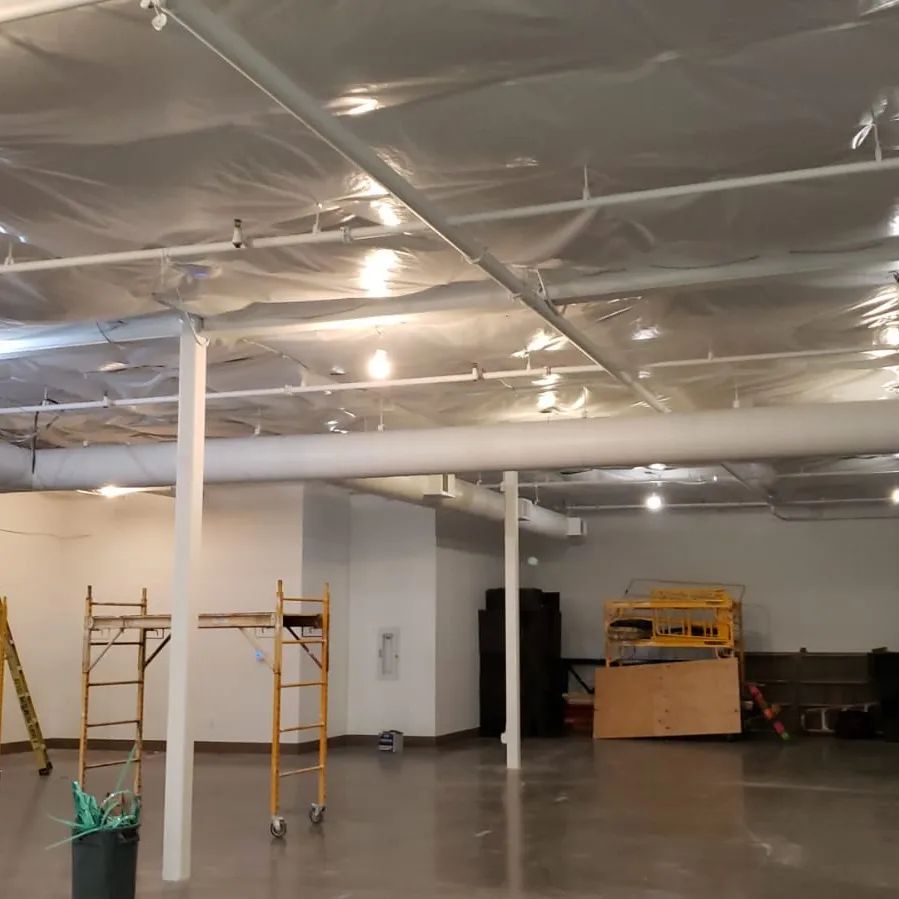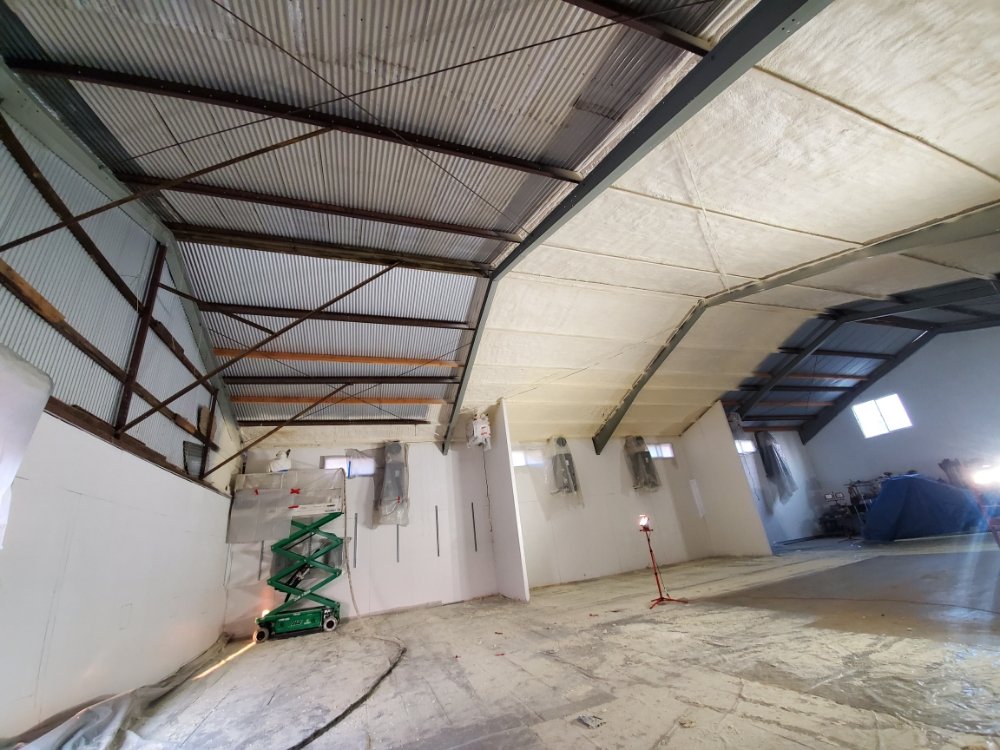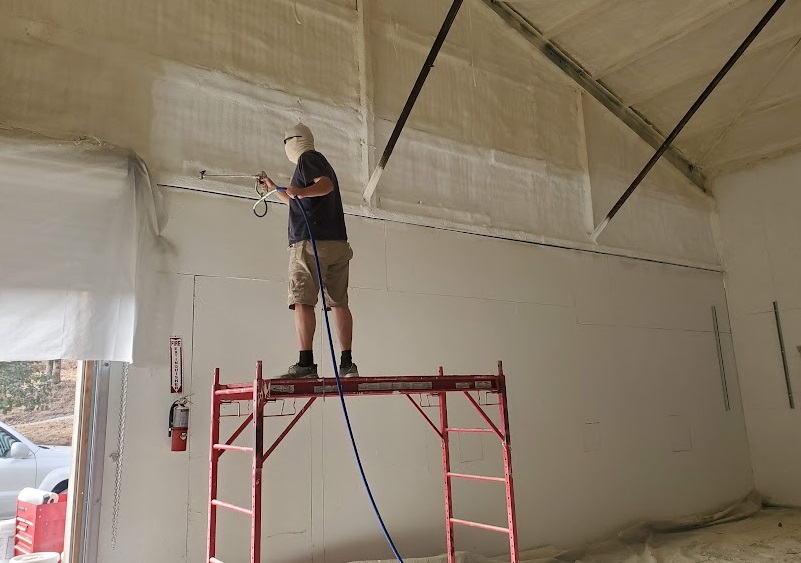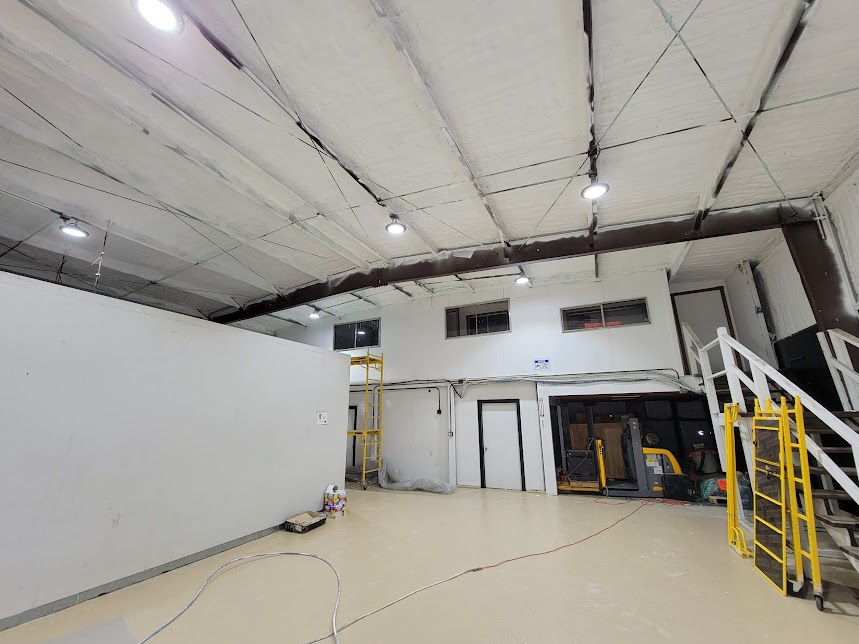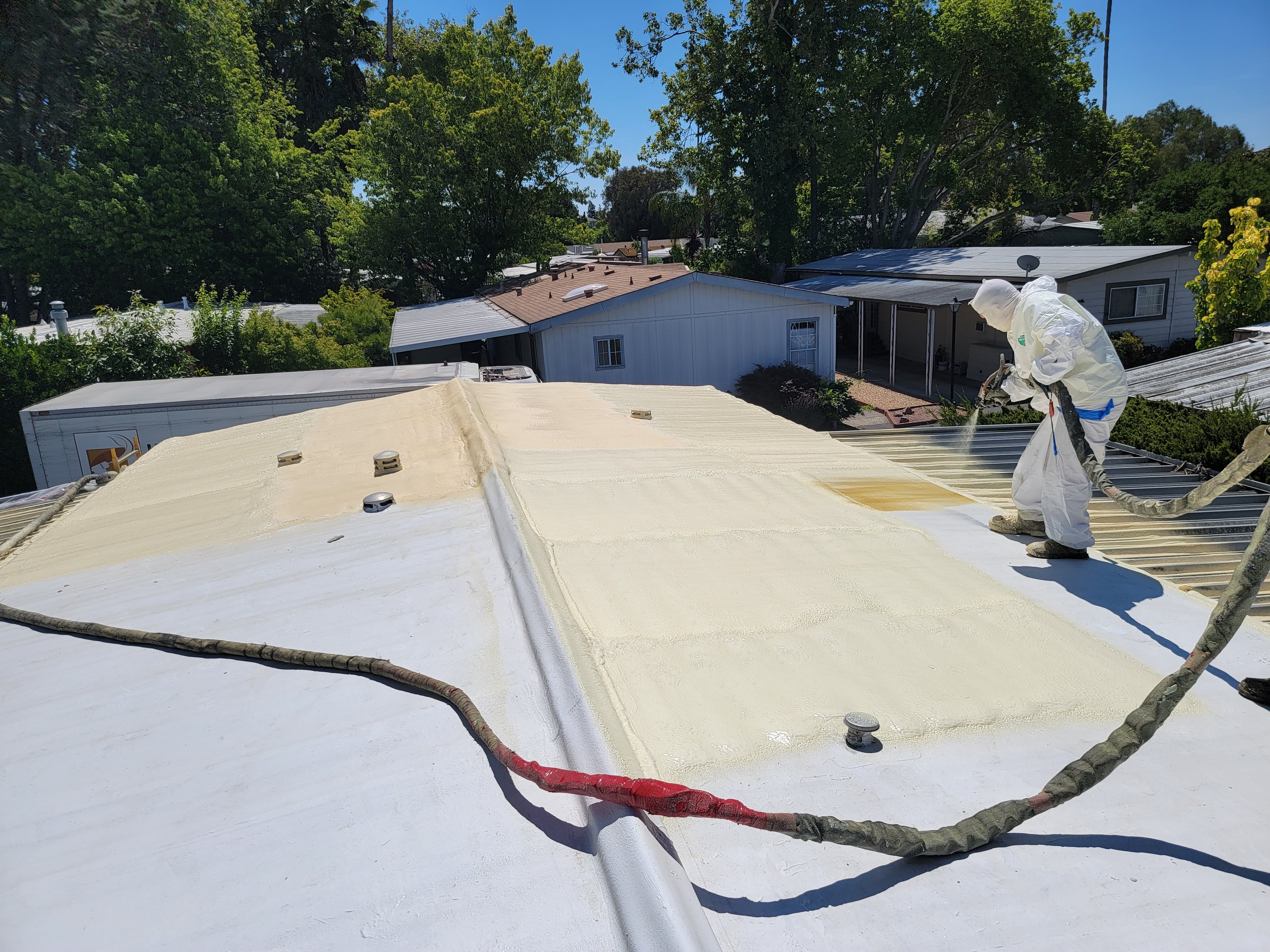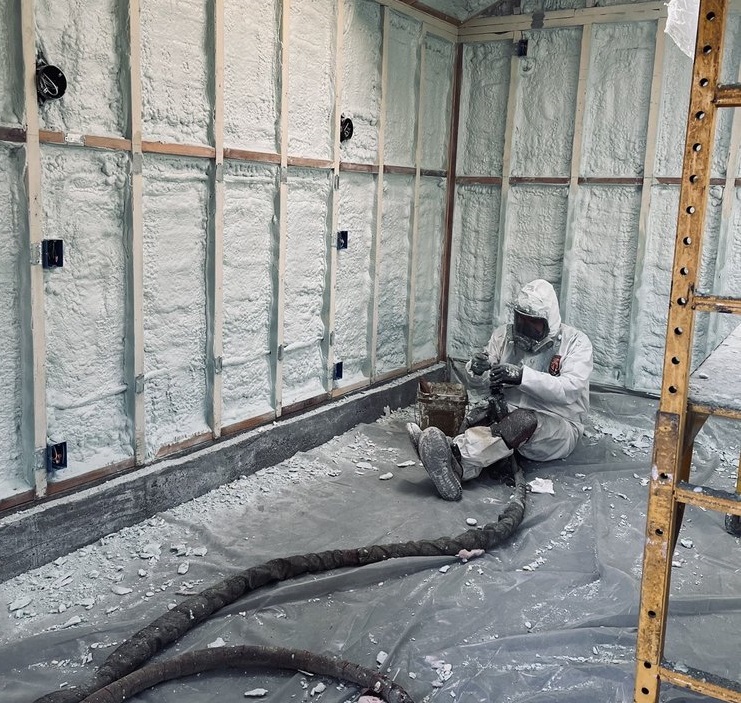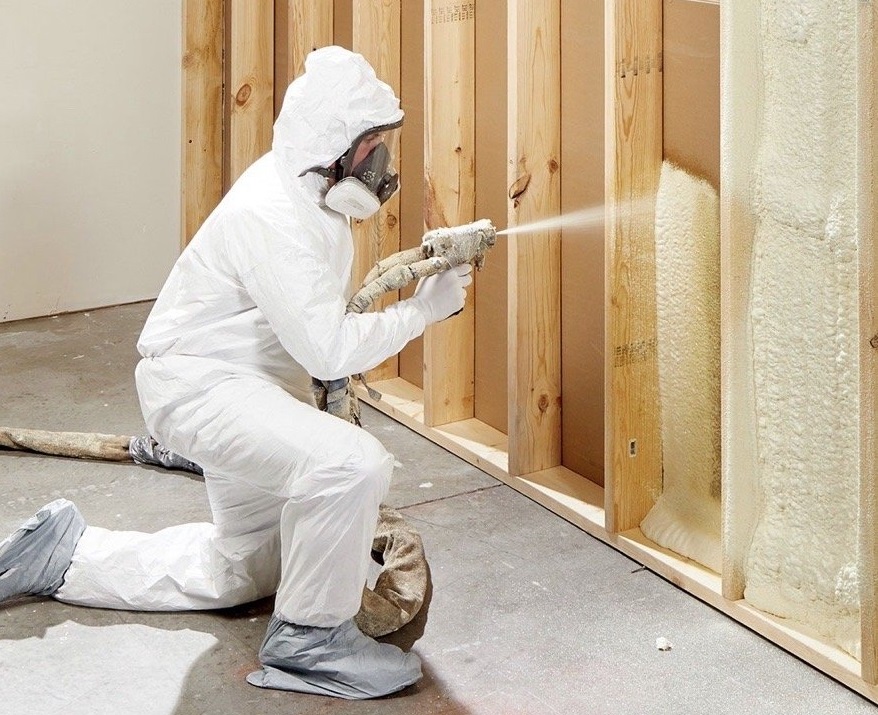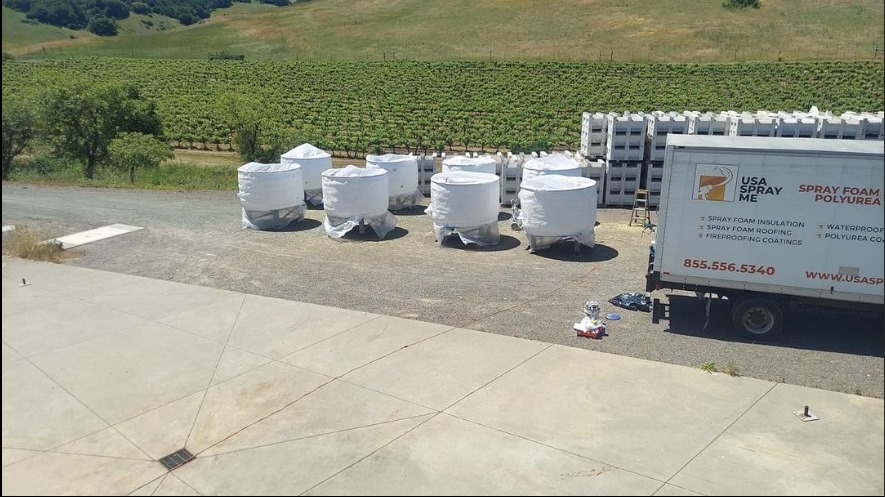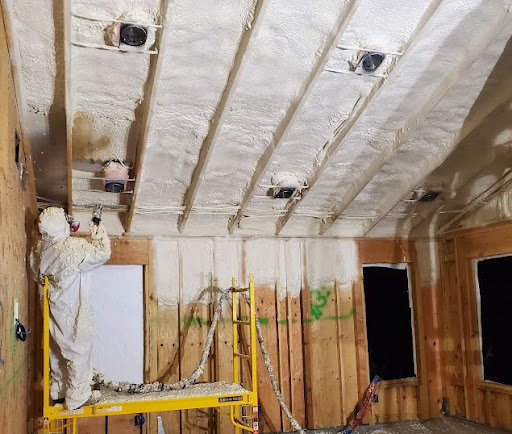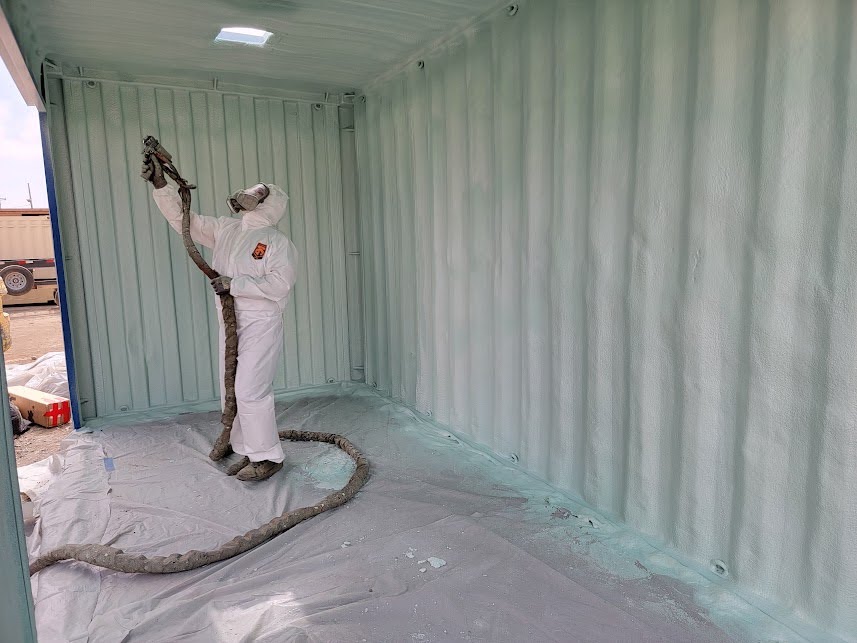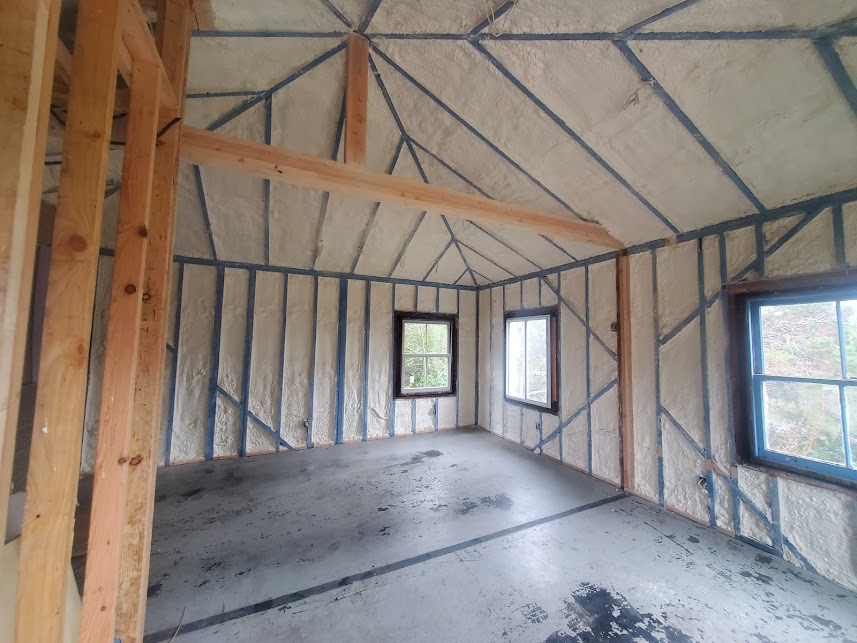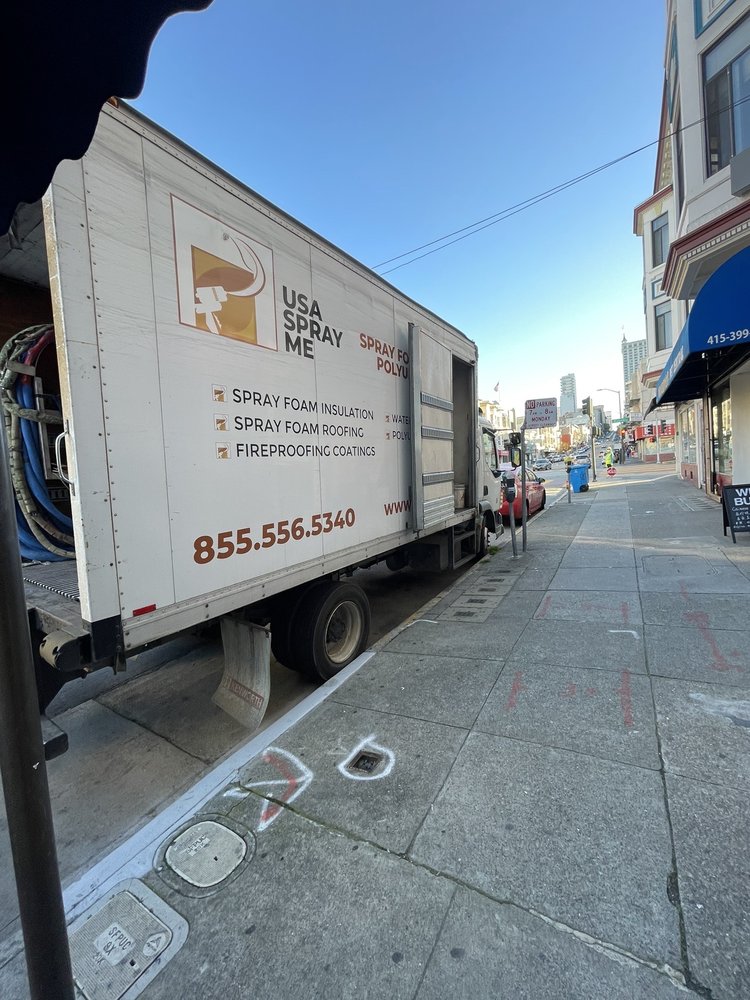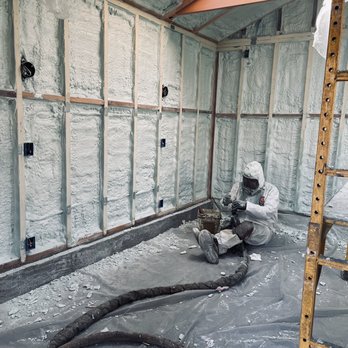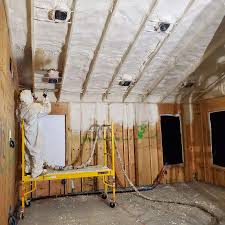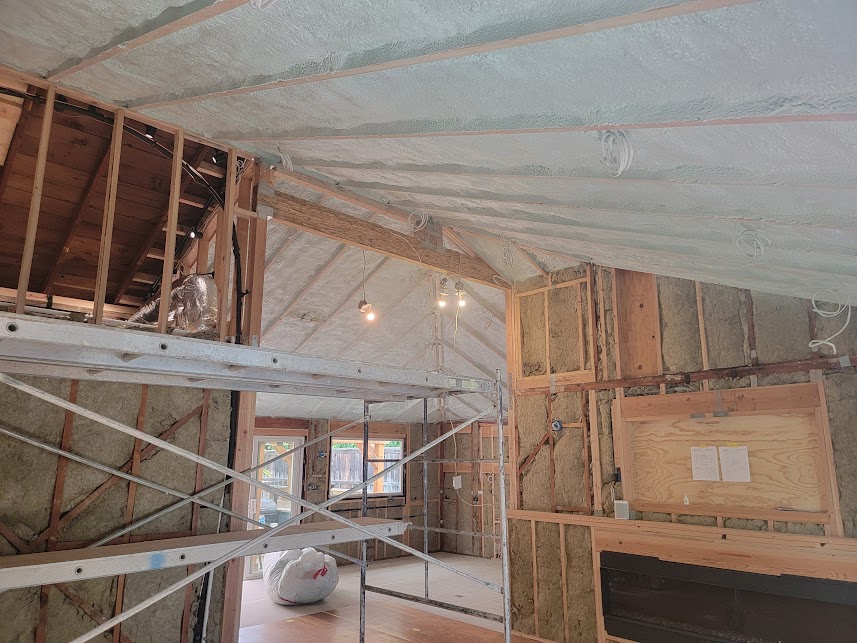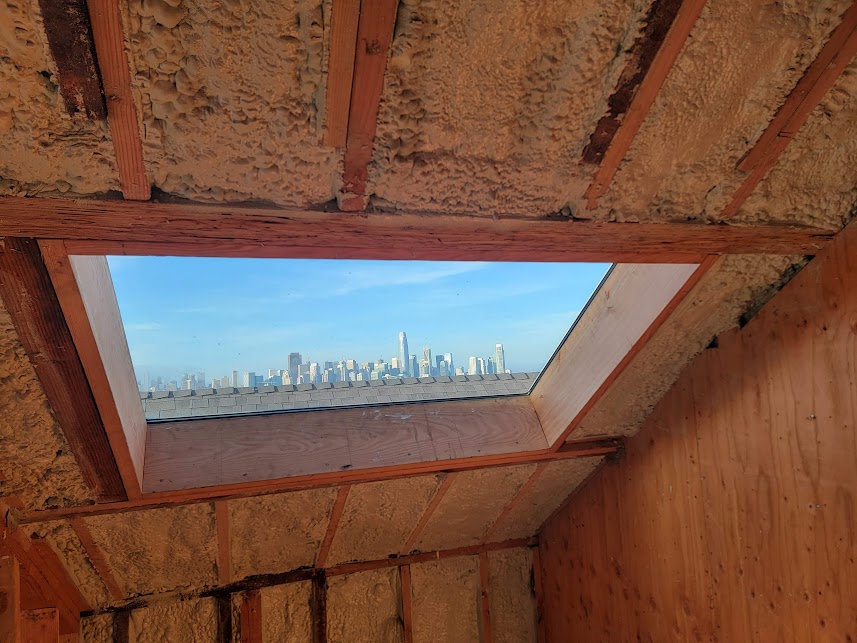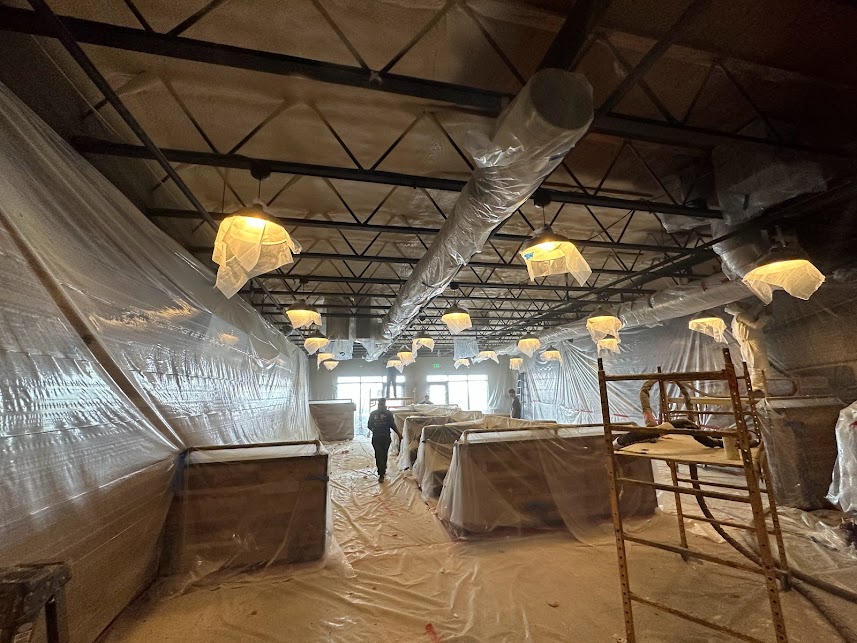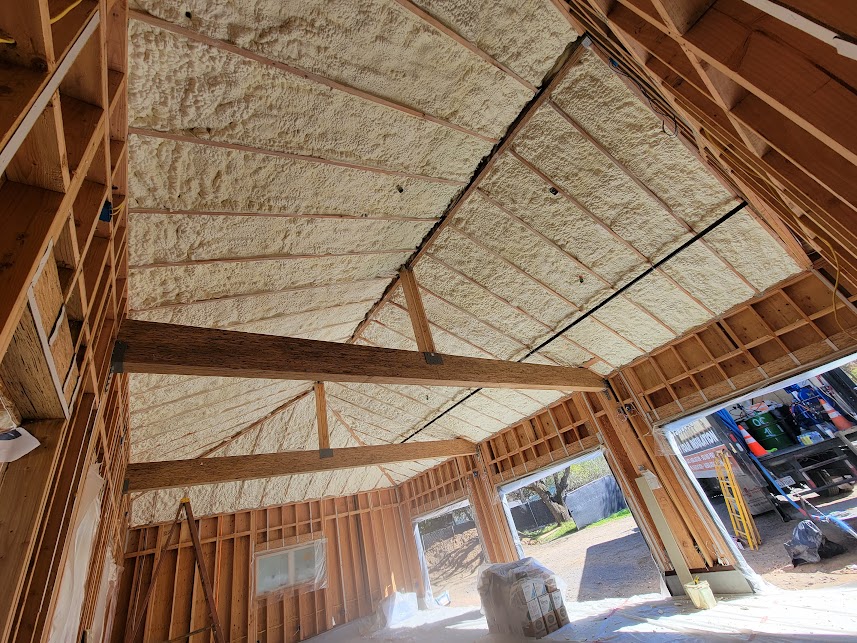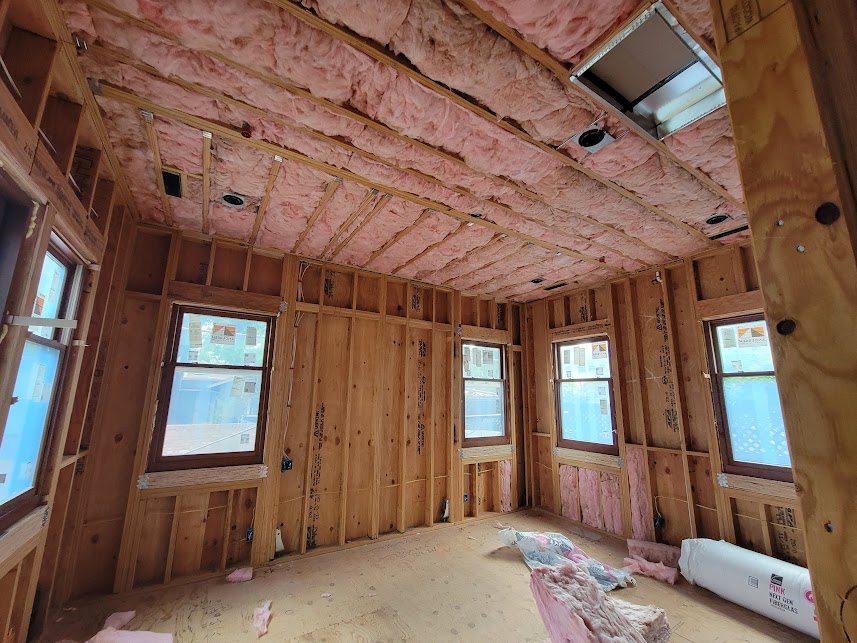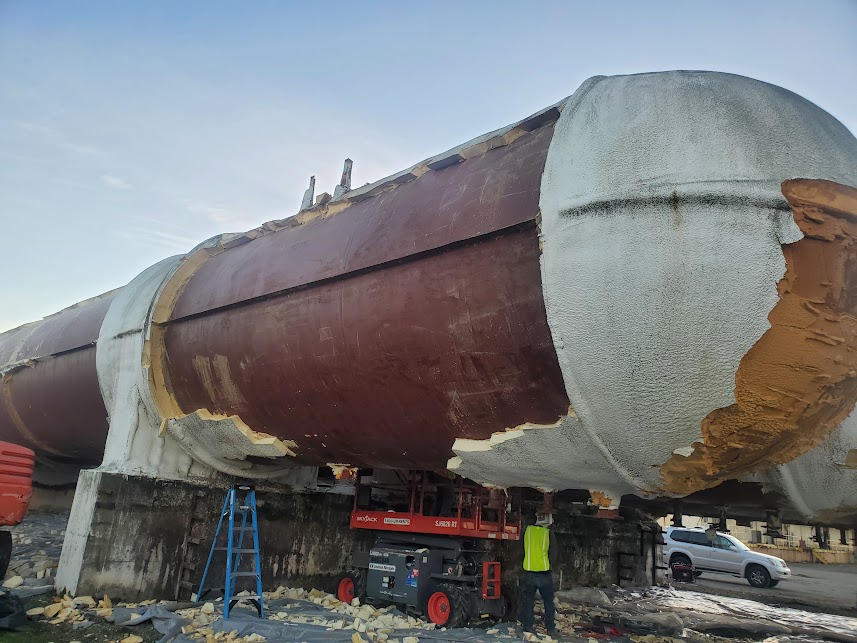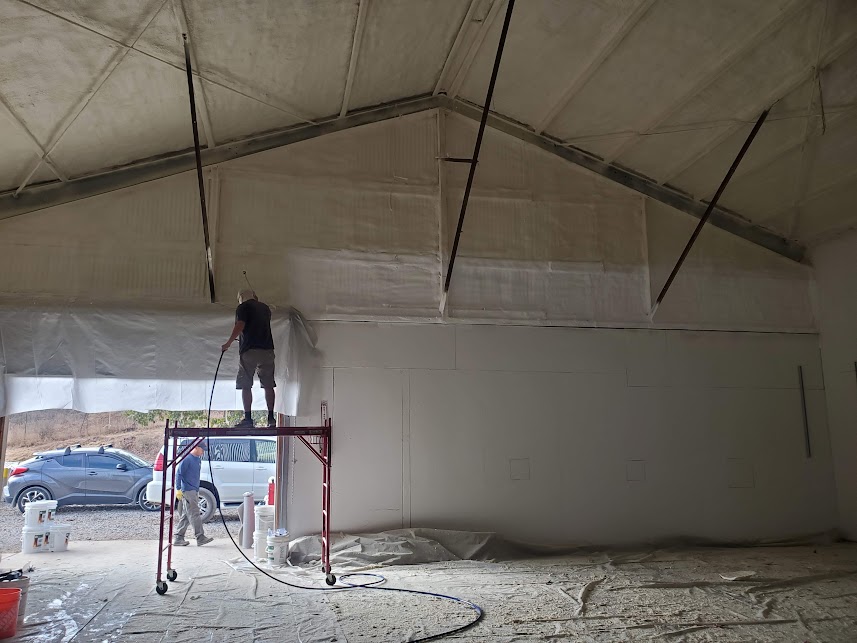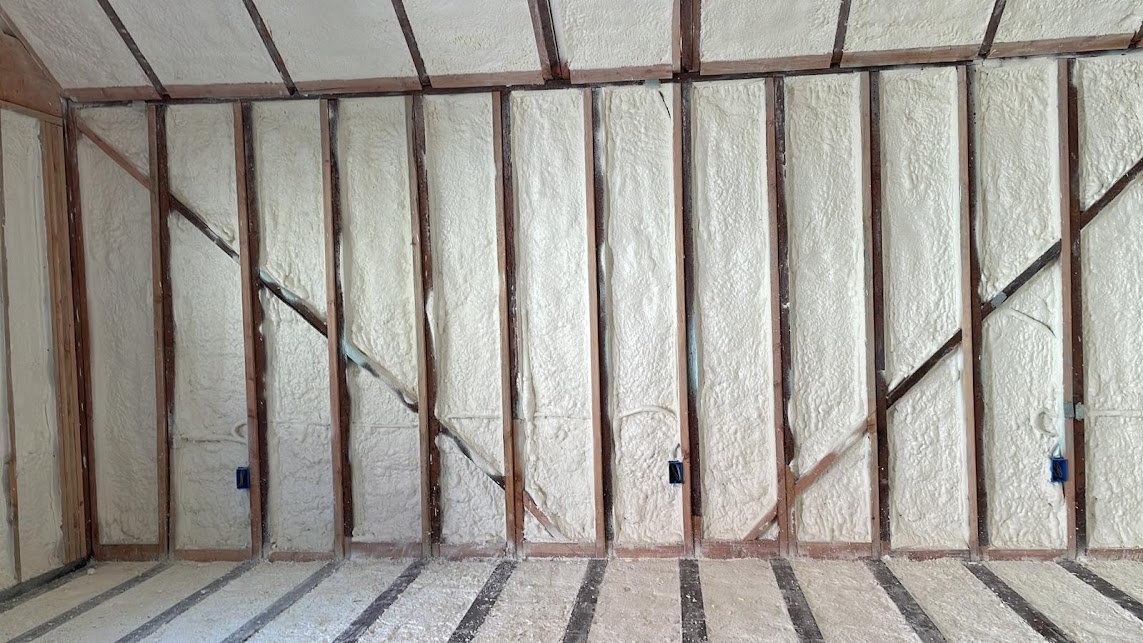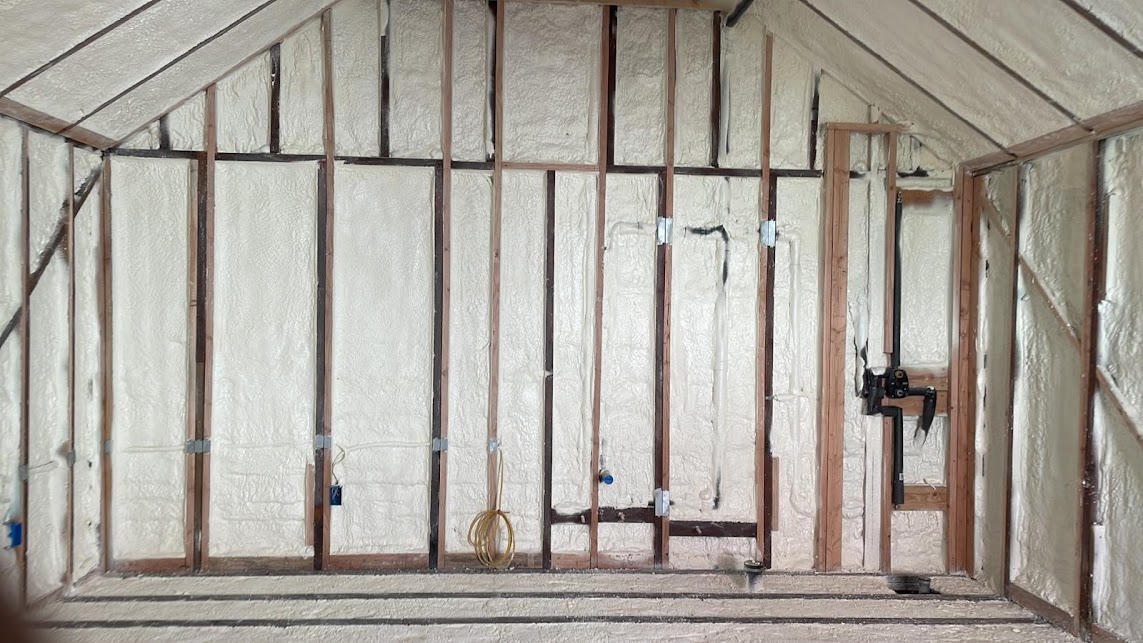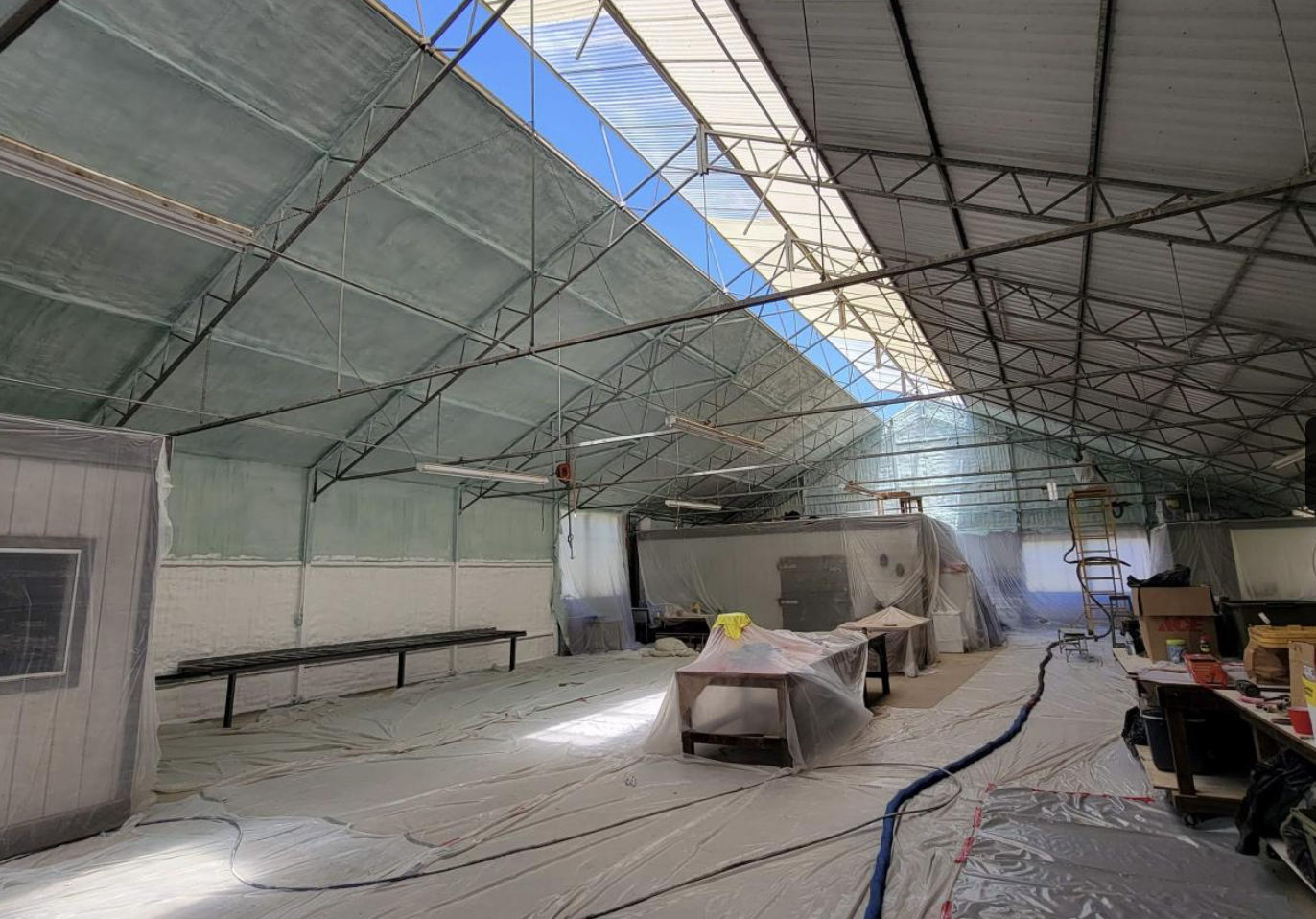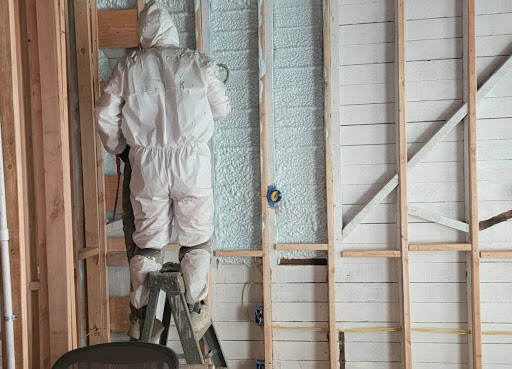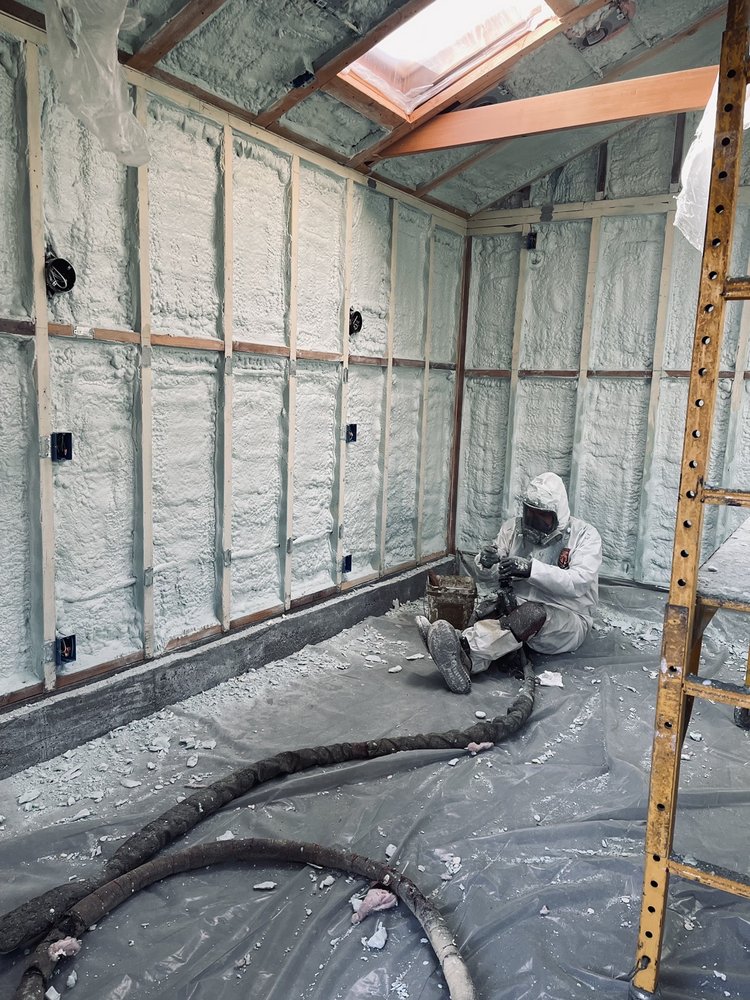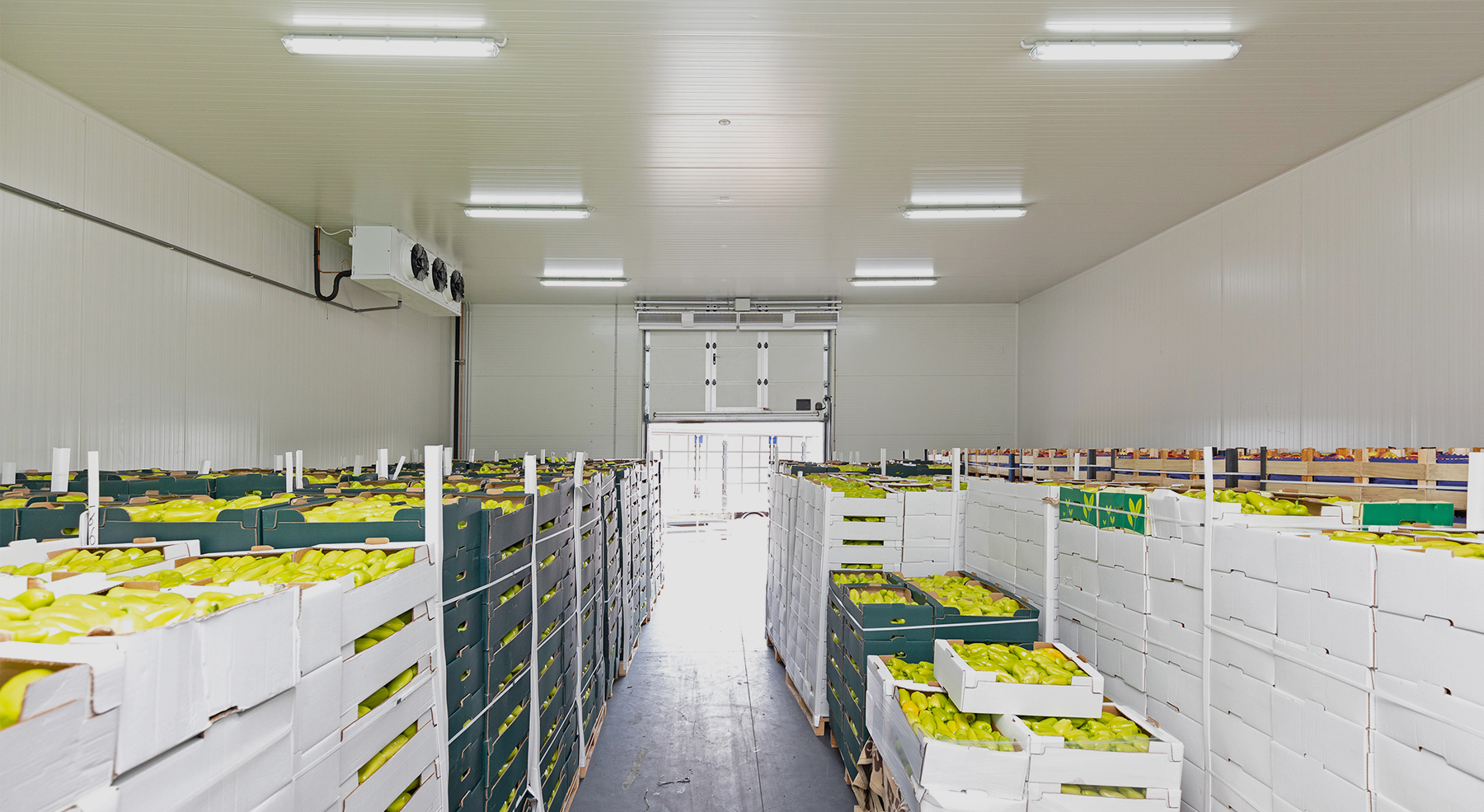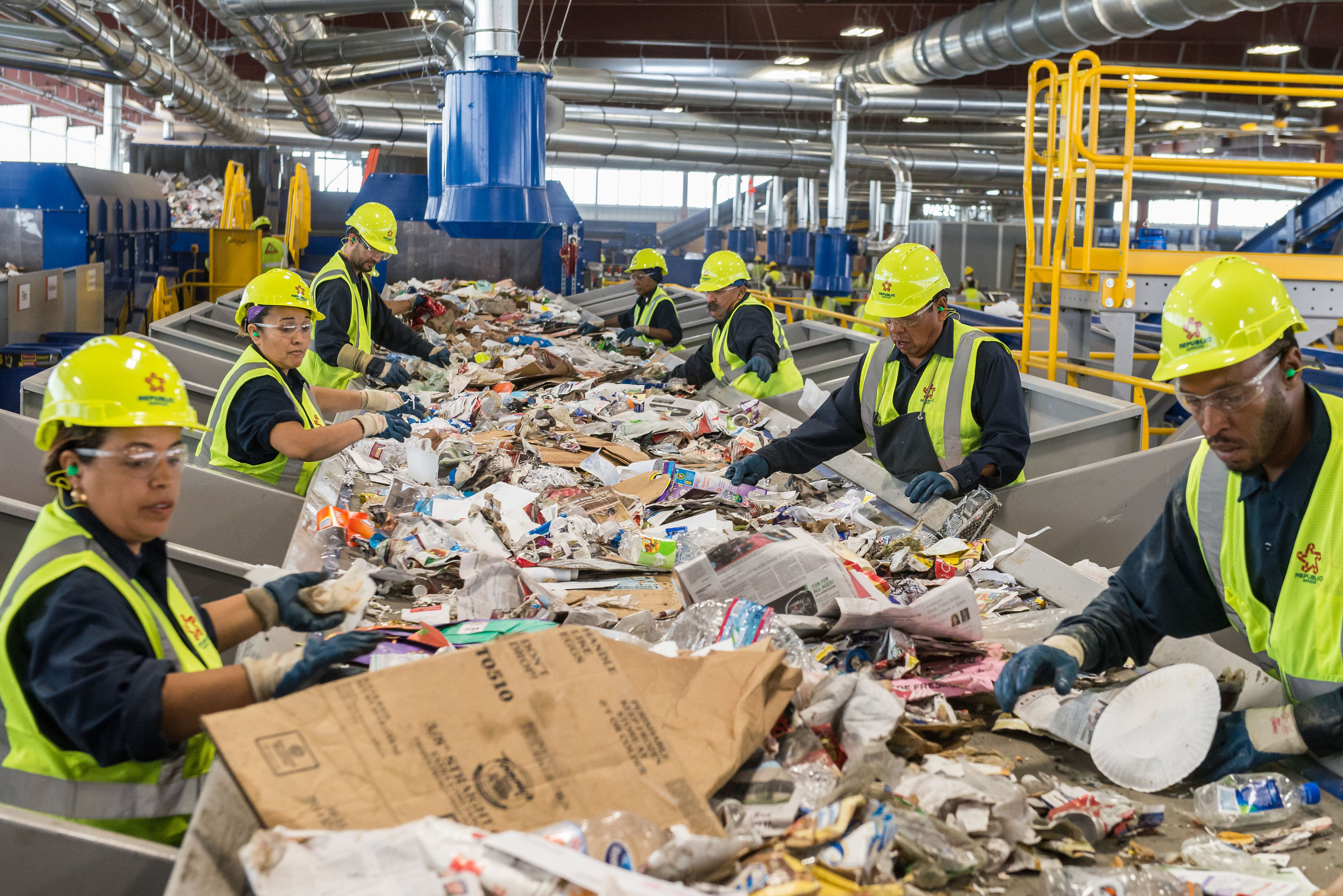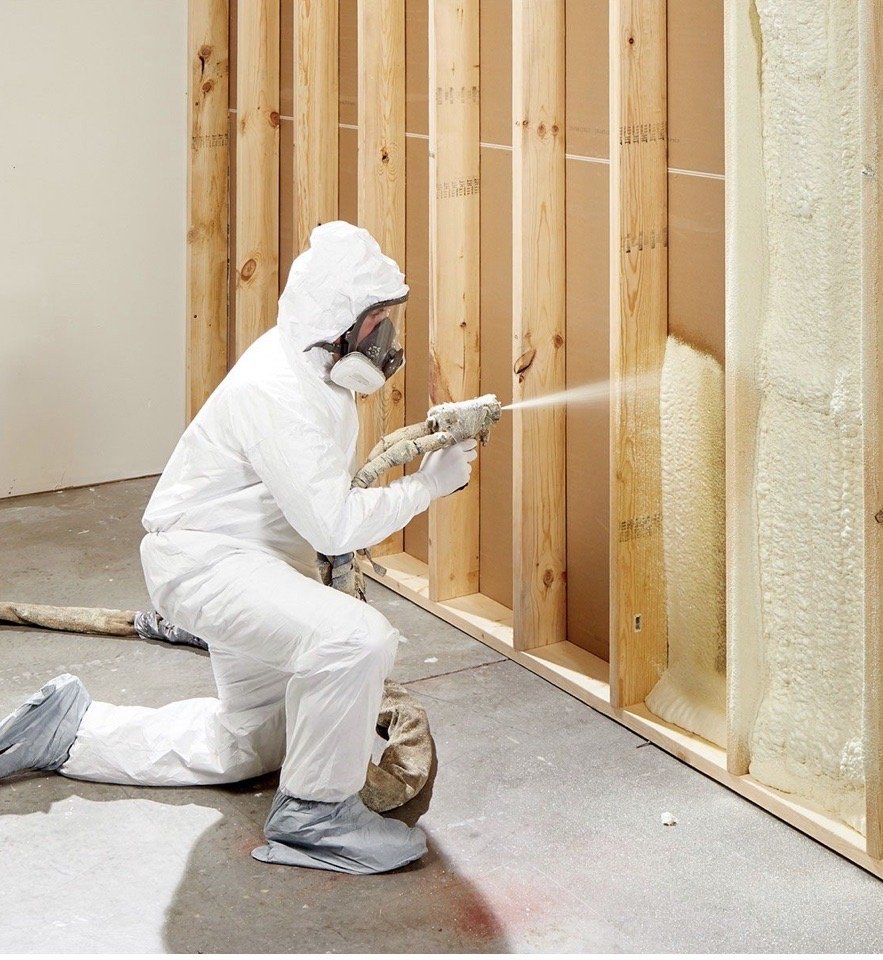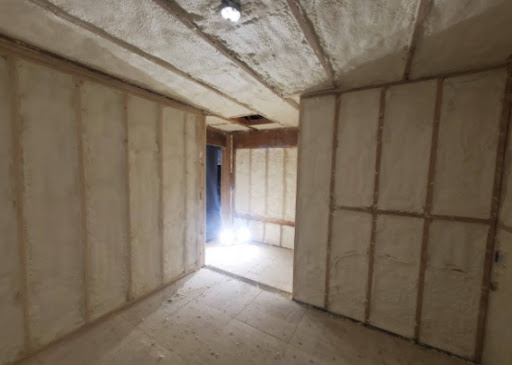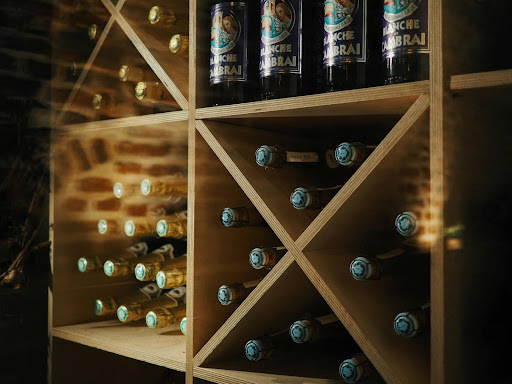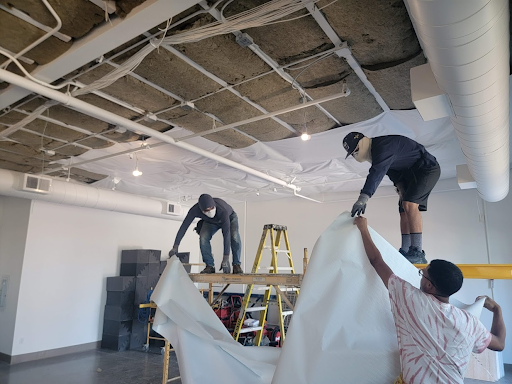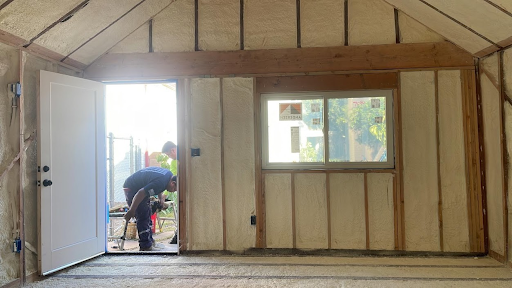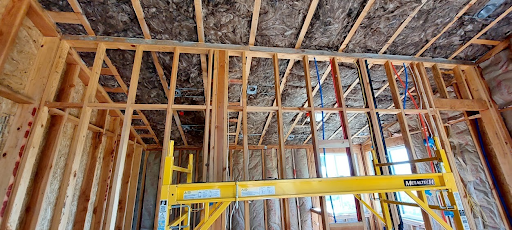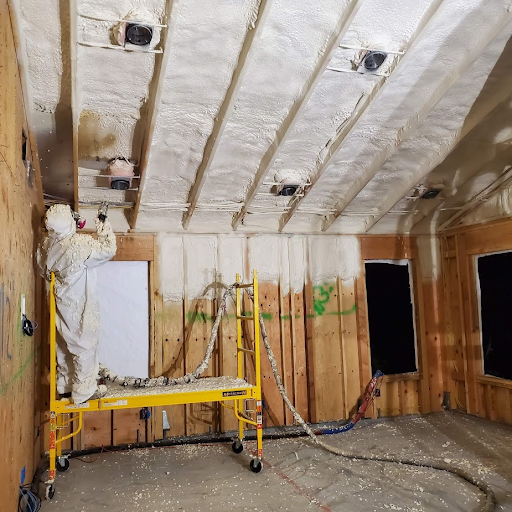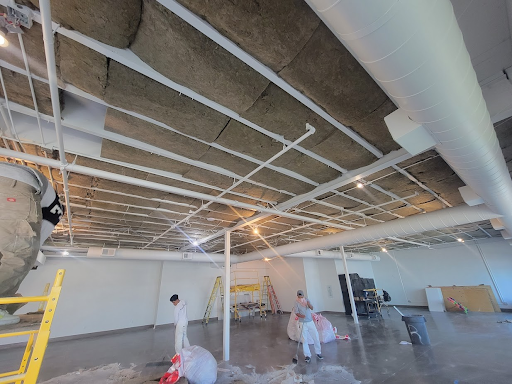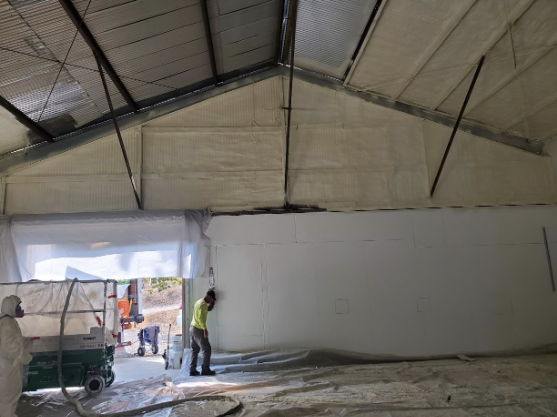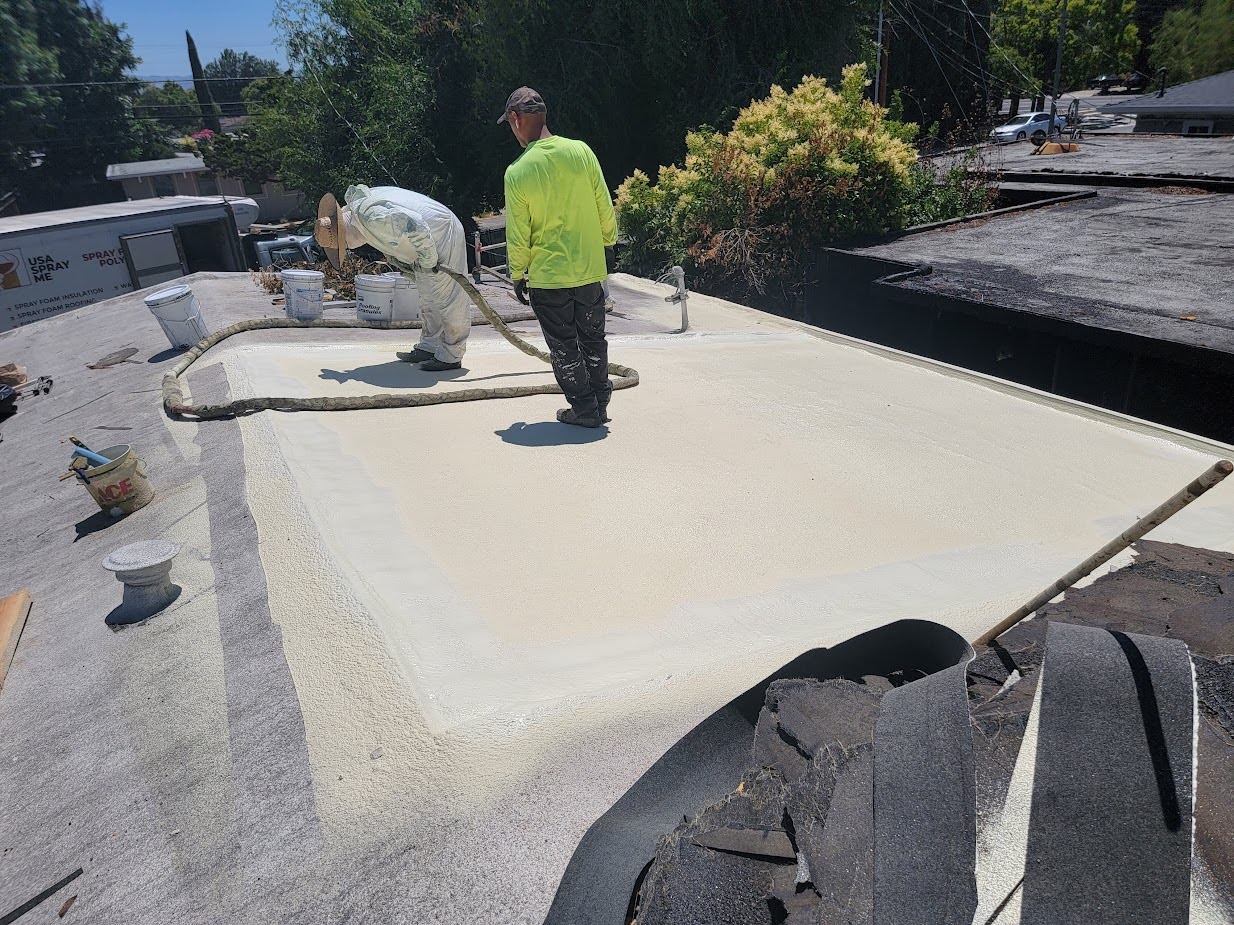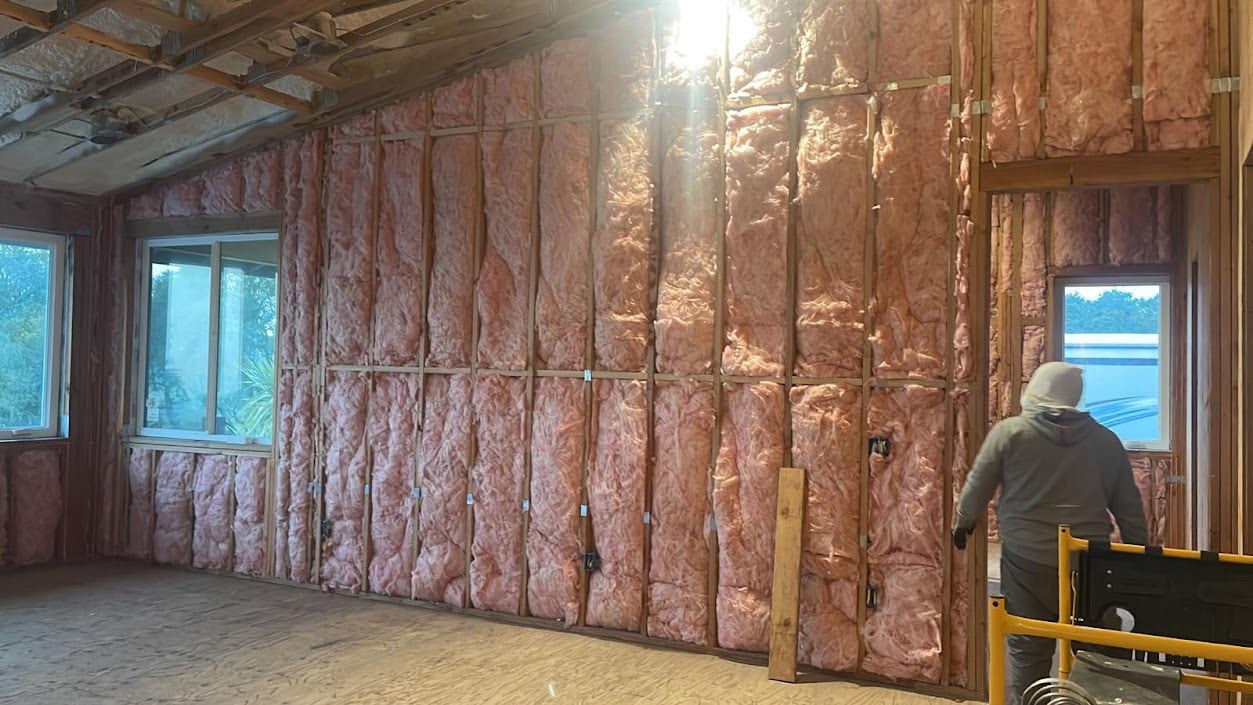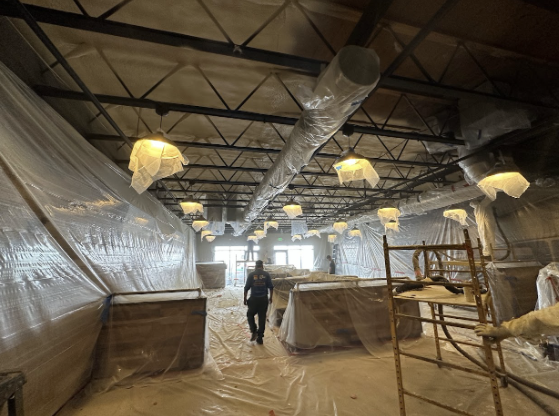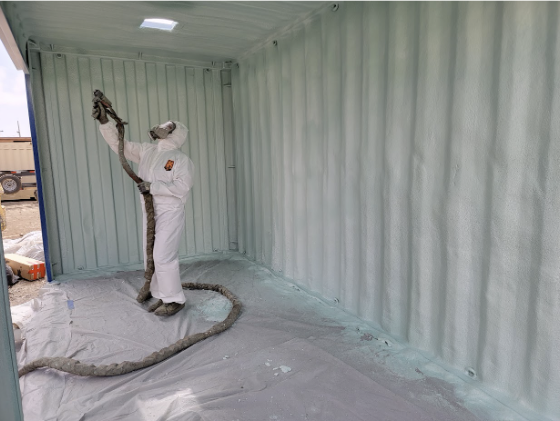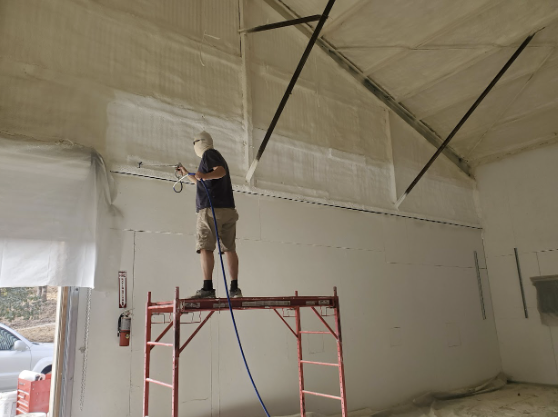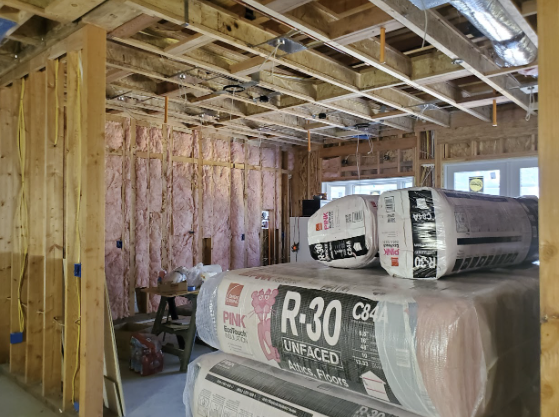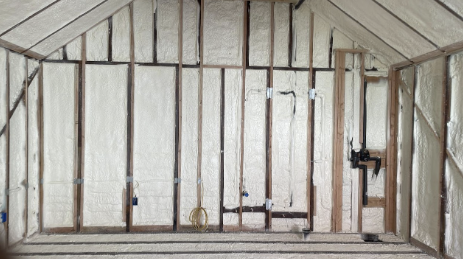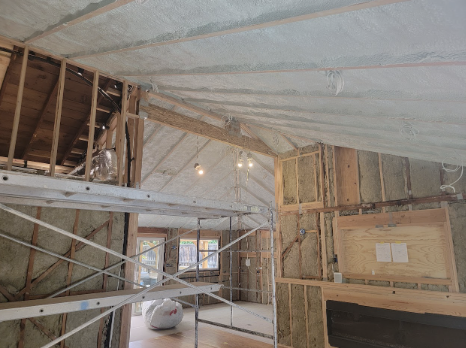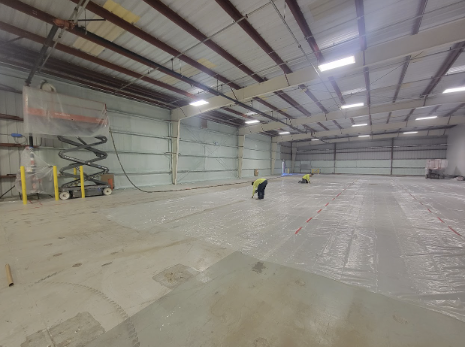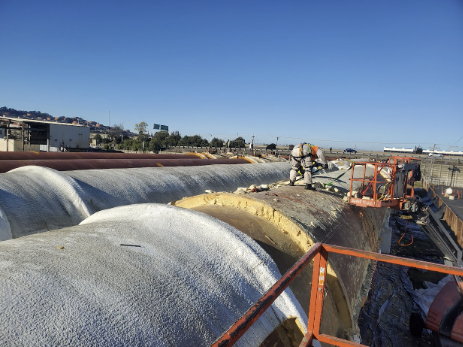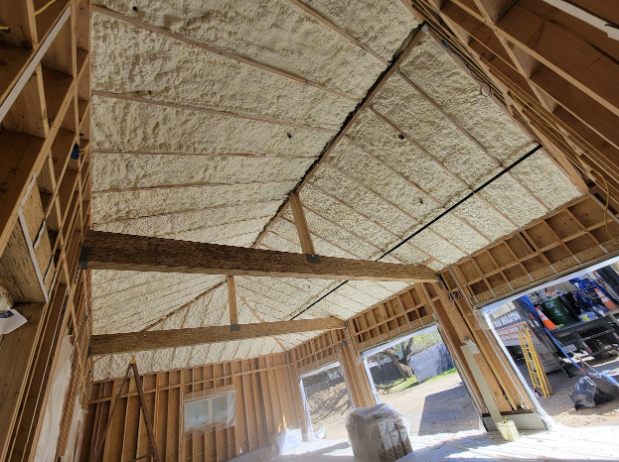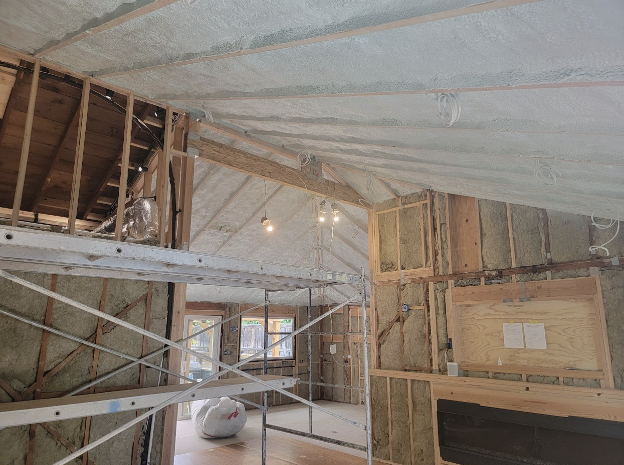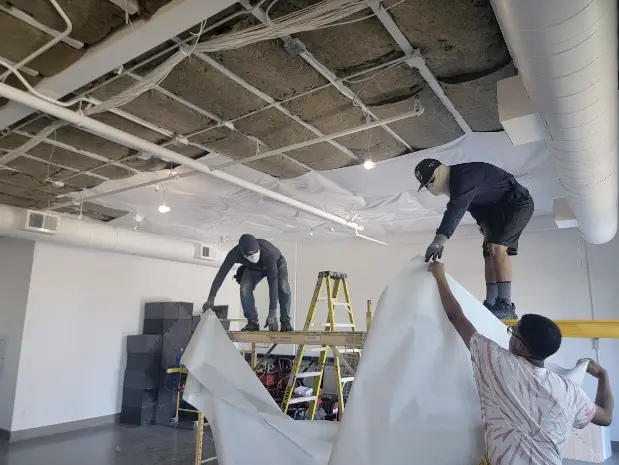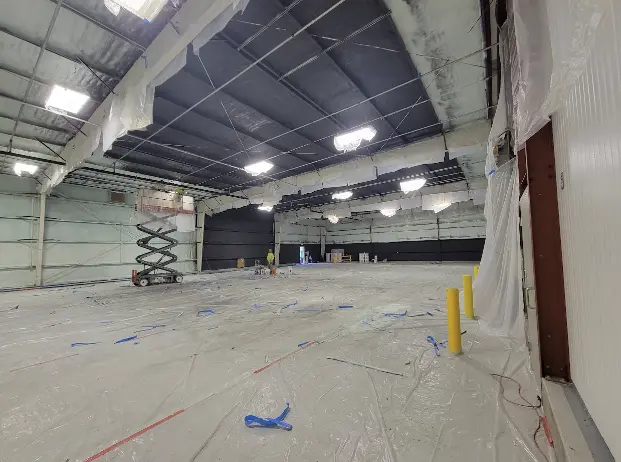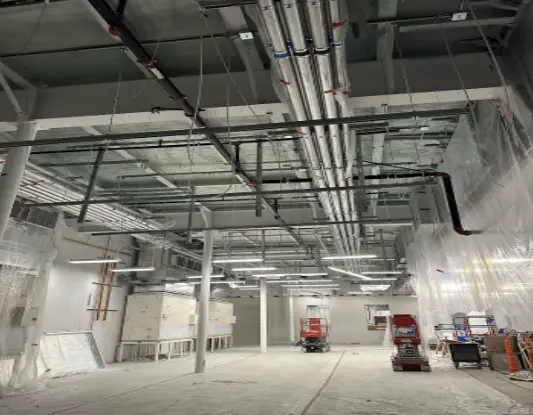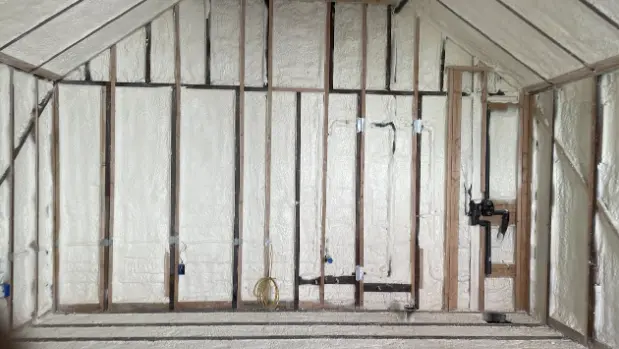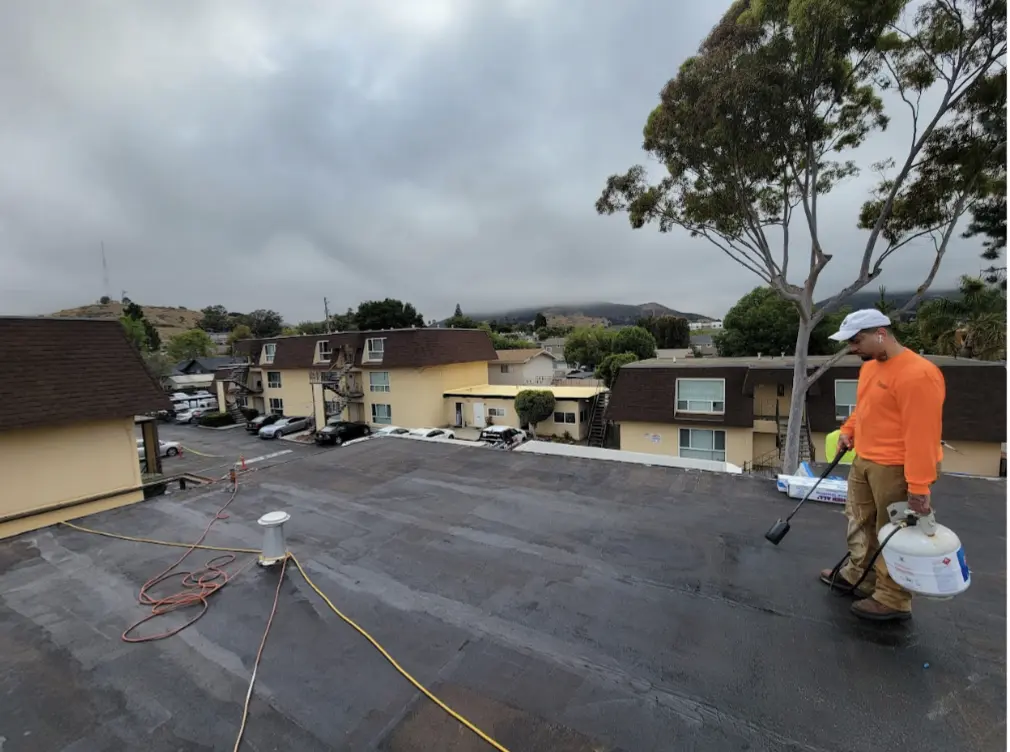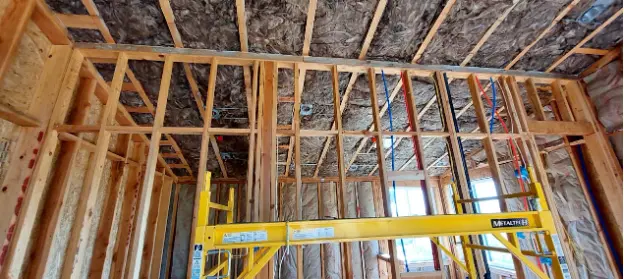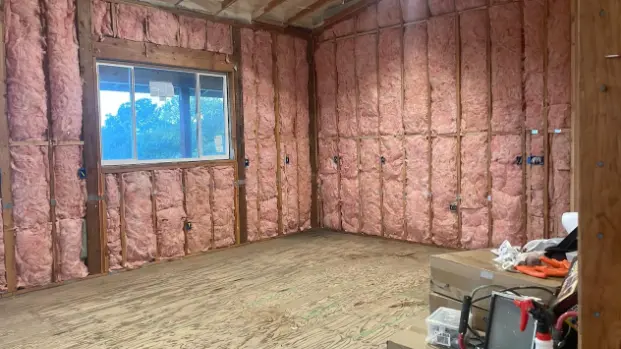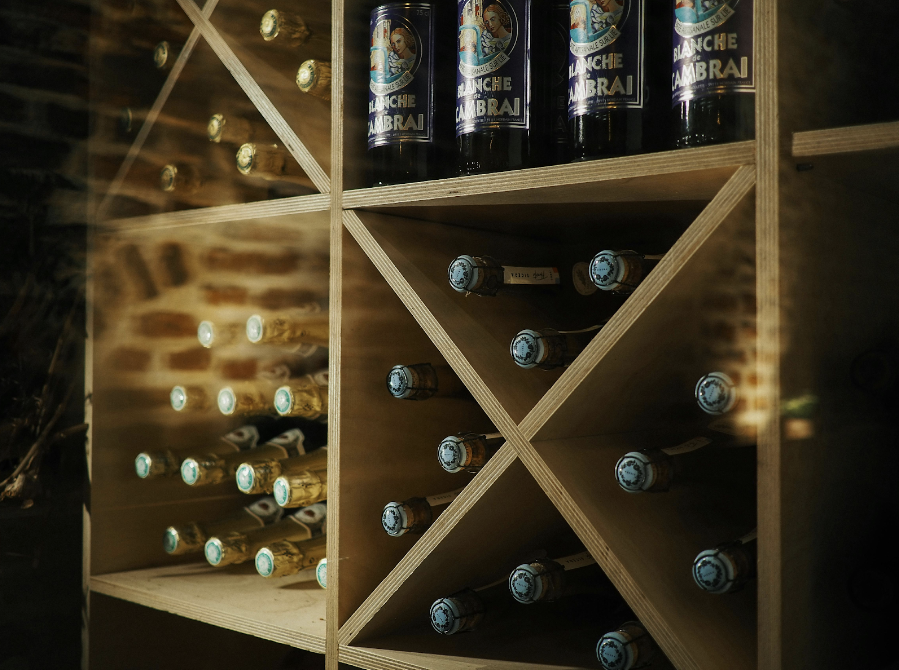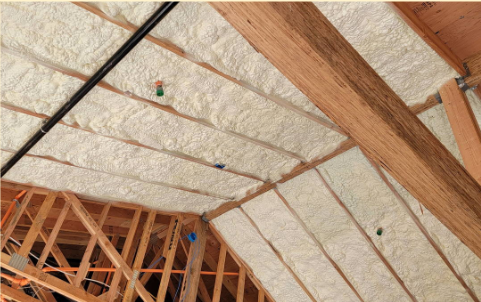The Blog
We Provide A Variety Of Spray Polyurethane Foam Solutions
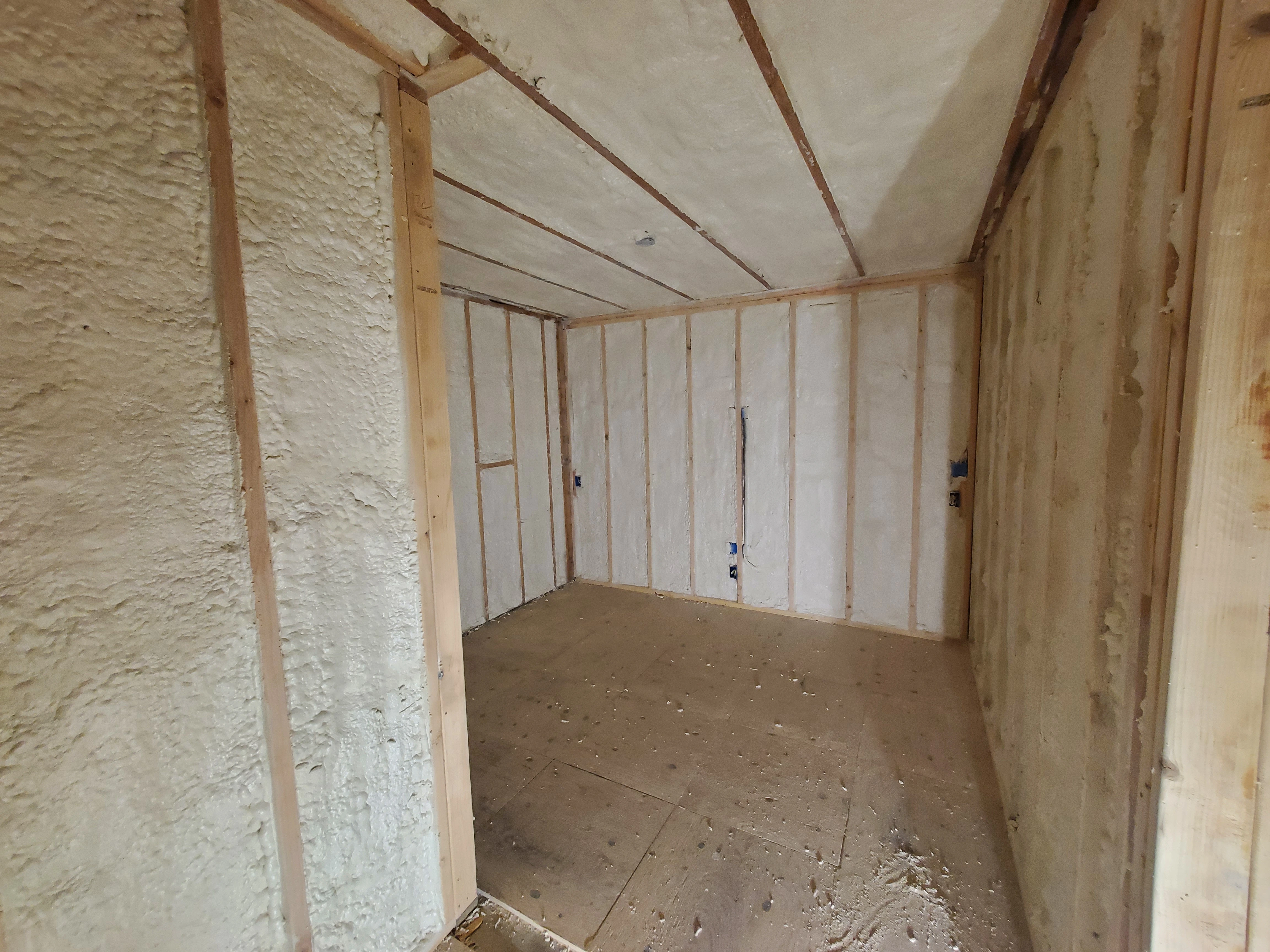
-
Compare spray foam and fiberglass: R-values, costs, moisture performance, and Title 24 compliance
-
Spray foam delivers 25-40% energy savings vs fiberglass's 5-15% in California homes
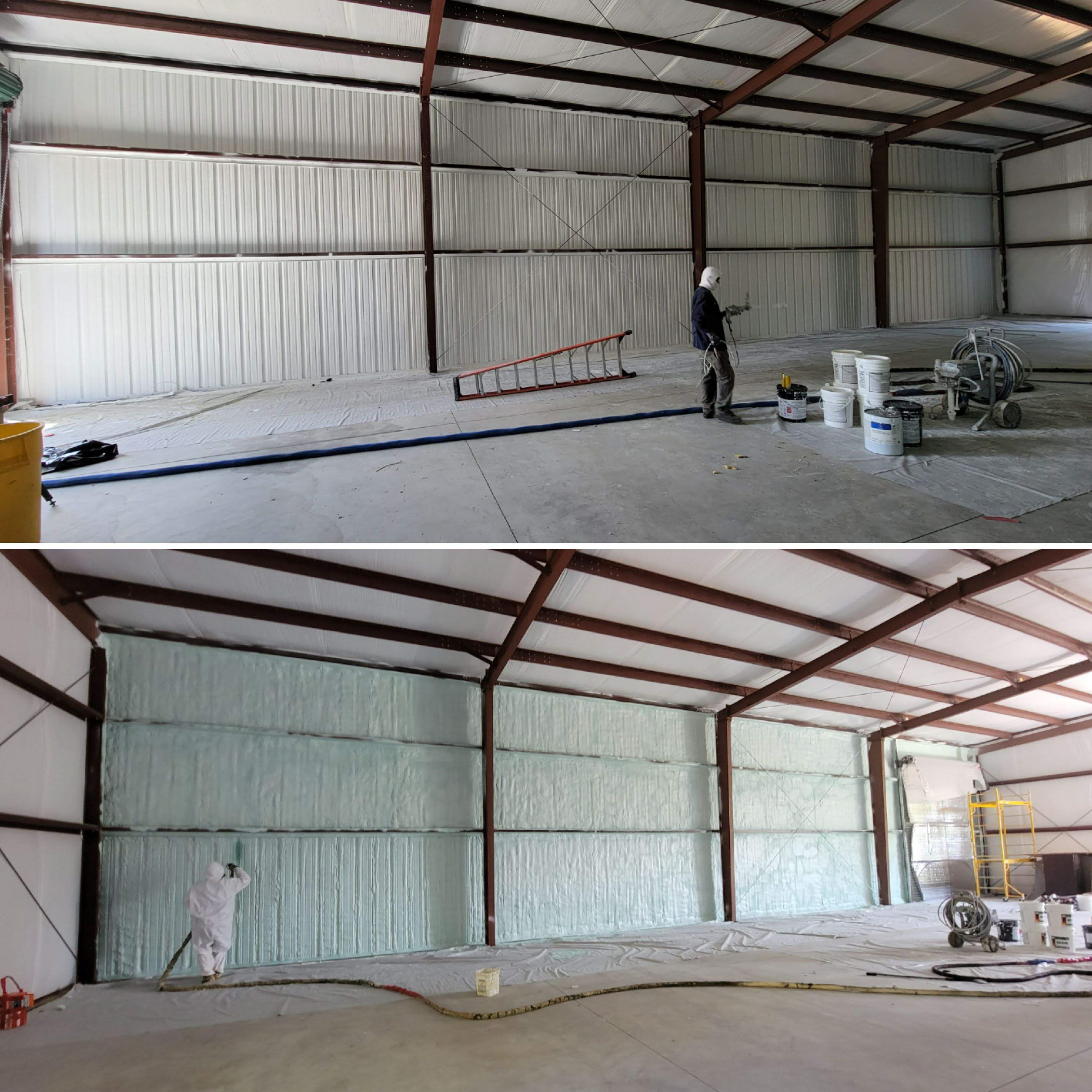
-
Compare spray foam and cellulose: air sealing, moisture control, and energy savings
-
Spray foam reduces HVAC costs by 25-40% vs cellulose's 10-20% in California climates

-
Real 2025 prices: $2,300-$9,800+ for Bay Area attic insulation projects
-
Compare spray foam, cellulose, and fiberglass costs by microclimate and Title 24 requirements

-
Compare spray foam and mineral wool: R-values, costs, fire safety, and moisture control for California projects
-
Smart strategy: spray foam for air sealing, mineral wool for fire-critical assemblies and WUI zones
.jpg)
-
Compare closed-cell and open-cell spray foam insulation performance, costs, and best applications
-
2025 environmental progress: HFO-based systems cut greenhouse gas emissions by up to 99%
.jpg)
-
Learn what it actually takes to pass Title 24 using smart air sealing and insulation strategies
-
Expert guidance on QII, blower door testing, and choosing the right materials for compliance
![Rooftop of a commercial building in Palo Alto with spray foam roofing insulation applied to the surface and parapet walls, HVAC equipment and electrical cables visible.]()
-
Palo Alto's mix of tech offices, restaurants, and commercial spaces requires tailored insulation to manage temperature, reduce noise, and comply with California energy codes.
-
Closed-cell spray foam is the top-performing option, delivering excellent thermal resistance and moisture control — ideal for kitchens, cold storage areas, and office environments.
![Interior of a building under construction in Hayward with spray foam insulation applied to walls, visible wooden studs, metal framing, and a plywood staircase leading to an upper level.]()
-
Hayward's mix of tech offices, restaurants, and commercial spaces requires tailored insulation to manage temperature, reduce noise, and comply with California energy codes.
-
Closed-cell spray foam is the top-performing option, delivering excellent thermal resistance and moisture control — ideal for kitchens, cold storage areas, and office environments.
![Interior of a building under construction in Walnut Creek with closed-cell spray foam insulation applied to walls and ceiling, wooden studs and protective floor covering visible.]()
-
Walnut Creek's mix of tech offices, restaurants, and commercial spaces requires tailored insulation to manage temperature, reduce noise, and comply with California energy codes.
-
Closed-cell spray foam is the top-performing option, delivering excellent thermal resistance and moisture control — ideal for kitchens, cold storage areas, and office environments.
![Spray foam insulation applied between wall studs.]()
-
San Mateo's mix of tech offices, restaurants, and commercial spaces requires tailored insulation to manage temperature, reduce noise, and comply with California energy codes.
-
Closed-cell spray foam is the top-performing option, delivering excellent thermal resistance and moisture control — ideal for kitchens, cold storage areas, and office environments.
![Spray foam insulation applied between wall studs.]()
-
San Rafael’s mix of tech offices, restaurants, and commercial spaces requires tailored insulation to manage temperature, reduce noise, and comply with California energy codes.
-
Closed-cell spray foam is the top-performing option, delivering excellent thermal resistance and moisture control — ideal for kitchens, cold storage areas, and office environments.
![Spray foam insulation applied between wall studs.]()
-
Redwood City’s diverse commercial infrastructure requires targeted insulation to control temperature, reduce noise, and meet California energy standards.
-
Closed-cell spray foam is the most effective solution, offering high thermal resistance and moisture protection, especially in kitchens, cold storage, and offices.
- Fiberglass and blown-in insulation provide more affordable alternatives with varied performance depending on building needs.
![Large warehouse with spray foam insulation applied to the ceiling and walls.]()
-
Its high R-value and seamless moisture barrier make
SPF ideal for Fresno’s warm climate, preventing
condensation, corrosion, and thermal loss.
-
While SPF insulation costs $2.00 - $9.00 per square
foot, its durability and energy-saving benefits make
it a cost-effective long-term investment.
![Large warehouse with spray foam insulation applied to the ceiling and walls.]()
-
The U.S. cold storage market is set to grow from
$33.46 billion in 2022 to $74.12 billion by 2032.
-
Proper insulation, such as Spray Polyurethane Foam
(SPF), is essential for minimizing heat transfer,
reducing energy consumption, and preventing
condensation in cold storage tanks.
![Large warehouse with spray foam insulation applied to the ceiling and walls.]()
-
SPF insulation can improve energy efficiency by up to
50%, significantly reducing the cost of refrigeration
in cold storage tanks in San Francisco's variable
climate.
-
The airtight seal provided by SPF insulation prevents
moisture ingress, crucial for preventing ice formation
and corrosion under insulation in cold storage tanks.
![Large warehouse with spray foam insulation applied to the ceiling and walls.]()
-
SPF insulation significantly reduces energy costs by
creating an airtight barrier that minimizes air and
moisture infiltration, making it ideal for Fresno's
varied climate.
-
SPF insulation has a high R-value of 3.6 to 7.4 per
inch, outperforming traditional materials in thermal
resistance and ensuring year-round comfort.
![Large warehouse with spray foam insulation applied to the ceiling and walls.]()
-
SPF insulation significantly reduces energy costs by
creating an airtight barrier that minimizes air and
moisture infiltration, making it ideal for Fresno's
varied climate.
-
SPF insulation has a high R-value of 3.6 to 7.4 per
inch, outperforming traditional materials in thermal
resistance and ensuring year-round comfort.
![Large warehouse with spray foam insulation applied to the ceiling and walls.]()
-
Spray Polyurethane Foam (SPF) insulation significantly
enhances energy efficiency for San Francisco’s low
slope roofs, reducing energy consumption and costs
with its high R-value.
-
SPF insulation offers superior moisture resistance and
seamless application, protecting roofs from leaks and
extending their lifespan by up to 20 years.
![Large warehouse with spray foam insulation applied to the ceiling and walls.]()
-
In Sacramento’s climate, Spray Polyurethane Foam (SPF)
insulation reduces heating and cooling energy use by
up to 50%, making it a highly efficient option for
thermal management.
-
SPF insulation provides exceptional durability and
protection for buildings, effectively shielding roofs
from leaks and weather-related damage and enhancing
structural strength.
![Large warehouse with spray foam insulation applied to the ceiling and walls.]()
-
Proper insulation can reduce lab energy consumption by
up to 30%, providing significant savings in
environments that require specialized temperature and
humidity controls.
-
Spray foam insulation, though more expensive initially
($2.00 to $9.00 per square foot), offers superior
temperature control and moisture resistance, making it
a great choice for labs that prioritize energy
efficiency and long-term savings.
![Large warehouse with spray foam insulation applied to the ceiling and walls.]()
-
Proper insulation in commercial buildings can reduce
energy consumption by up to 50%, significantly cutting
operational costs.
-
Fremont features a variety of insulation options,
including spray foam, closed-cell, fiberglass,
blown-in, and polyurea coating, each with unique
advantages based on specific needs.
-
Insulation costs vary, with materials like spray foam
...
![Large warehouse with spray foam insulation applied to the ceiling and walls.]()
-
With a higher R-value of 6 to 7 per inch, spray foam
offers better thermal insulation, especially in
extreme climates, compared to rockwool's 3 to 4 per
inch.
-
Though the initial cost of spray foam is higher, its
superior energy efficiency and air sealing deliver
significant long-term savings over rockwool.
-
Professional installation of spray foam creates a
seamless...
![Worker spraying insulation on the upper section of a large storage building.]()
-
Spray foam insulation offers an R-value of 6 to 7 per
inch, providing superior thermal resistance.
-
Batt insulation, while effective, may not create an
airtight seal like spray foam.
-
Spray foam prevents air leakage, significantly
improving energy efficiency compared to batts.
![Worker spraying insulation on the upper section of a large storage building.]()
-
Proper insulation in commercial buildings can reduce
heating and cooling expenses by up to 40%, improving
energy efficiency and sustainability.
-
Spray foam insulation provides superior thermal
properties and acts as a moisture barrier, making it
ideal for complex building designs.
![Worker spraying insulation on the upper section of a large storage building.]()
-
Choosing a skilled contractor for spray foam
insulation is essential to avoid gaps and ensure
maximum energy efficiency.
-
Spray foam insulation expands to fill gaps, providing
superior thermal performance, air, and moisture
sealing.
![Worker spraying insulation on the upper section of a large storage building.]()
-
Spray foam insulation can reduce energy costs by up to
50% in Oakland's climate.
-
It improves indoor air quality by blocking pollutants
and allergens.
-
Spray foam’s airtight seal leads to long-term energy
savings and reduced HVAC strain.
![Worker spraying insulation on the upper section of a large storage building.]()
-
Insulation materials like fiberglass, cellulose, and
spray foam help California research labs maintain
precise environmental conditions while managing costs.
-
Spray foam insulation offers superior thermal
resistance and air sealing but has higher upfront
costs ranging from $2.00 to $9.00 per square foot.
![Worker spraying insulation on the upper section of a large storage building.]()
-
In California, specific insulation types—fiberglass,
spray foam, or cellulose—are used to match regional
needs and building designs for energy efficiency.
-
Fiberglass ($1.40-$3.00/sq ft) and blown-in insulation
($1.50-$4.00/sq ft) are more affordable, while
cellulose ($2.00-$5.00/sq ft) provides eco-friendly
thermal resistance.
![Worker in protective gear applying spray foam insulation in a room with unfinished walls.]()
-
Spray foam insulation offers superior energy
efficiency and moisture control, making it a great
choice for labs in Santa Rosa's variable climate - but
it does come with a higher initial cost.
-
Blown-in insulation is cost-effective and provides
comprehensive coverage for irregular spaces, though it
may settle over time and require replenishment.
- Fiberglass insulation is affordable ...
![Worker in protective gear applying spray foam insulation in a room with unfinished walls.]()
-
Proper insulation can reduce heating and cooling costs
by up to 15% and lower energy use by 11%, making it
essential for businesses.
-
Santa Rosa's climate, with hot summers, requires
insulation that manages both heat and cold
efficiently.
- Spray foam offers the highest R-value ...
![Worker in protective gear applying spray foam insulation in a room with unfinished walls.]()
-
Foam roofing complies with California’s strict
building codes by meeting fire resistance, energy
efficiency (Title 24), and proper installation
standards.
-
SPF foam roofing provides superior insulation and
energy efficiency, reducing energy costs with airtight
seals and seamless application.
-
Foam roofing must have a minimum slope of 2% ...
![Worker in protective gear applying spray foam insulation in a room with unfinished walls.]()
-
Berkeley's green building codes target an 80%
reduction in greenhouse gas emissions by 2050,
prioritizing energy-efficient insulation.
-
Insulation plays a key role in minimizing energy loss
and ensuring buildings meet Berkeley’s energy
efficiency standards.
- iberglass, spray foam, blown-in ...
![Worker spraying insulation on the upper section of a large storage building.]()
-
Berkeley’s building code mandates R-13 for 2x4 walls,
R-20 for 2x6 walls, and at least R-22 for attics, with
extra insulation required for attics with HVAC
equipment or ducts.
-
Spray foam, cellulose, and fiberglass are the best
insulation options for new homes in Berkeley, offering
a range of benefits like air sealing, affordability,
and eco-friendliness.
- Proper insulation can reduce ...
![Worker spraying insulation on the upper section of a large storage building.]()
-
Insulating wine tanks effectively helps maintain the
stable temperatures essential for wine quality and can
reduce energy costs by as much as 50%.
-
Spray foam insulation provides excellent thermal
resistance and helps control moisture, making it a
great choice for extreme climates—though it does come
with a higher upfront cost.
- Fiberglass insulation is a ...
![Worker spraying insulation on the upper section of a large storage building.]()
-
California's Title 24 energy standards mandate
high-performance insulation with specific R-value
requirements for wine cellar energy efficiency.
-
Proper wine cellar insulation stabilizes temperatures
and humidity, essential for preserving wine quality.
- Closed-cell spray foam is an excellent ...
![Worker spraying insulation on the upper section of a large storage building.]()
-
Spray foam insulation costs between $2.00 and $9.00
per square foot, while blown-in insulation is more
affordable, at $1.50 to $4.00 per square foot.
-
Spray foam creates an airtight seal, reducing energy
costs by up to 50%, whereas blown-in insulation
improves energy efficiency but lacks air-sealing
capabilities.
- Spray foam requires professional ...
![Worker spraying insulation on the upper section of a large storage building.]()
-
Fiberglass insulation costs between $1.40 and $3.00
per square foot, while spray foam ranges from $2.00 to
$9.00 per square foot, offering higher long-term
savings.
-
Closed-cell spray foam has an R-value of up to 6.5 per
inch, while fiberglass provides an R-value between 2.2
and 2.7 per inch.
- Closed-cell spray foam resists moisture ...
![Worker spraying insulation on the upper section of a large storage building.]()
-
Choosing a top contractor for commercial insulation in
Sonoma Valley ensures better energy efficiency and
long-term cost savings for your property.
-
Licensing and certifications are crucial in selecting
a contractor who complies with local building
standards and demonstrates professionalism.
- Experienced contractors ...
![Worker spraying insulation on the upper section of a large storage building.]()
-
Choosing the right spray foam contractor is essential
for ensuring proper insulation performance and
long-term efficiency.
-
Professional installation of spray foam insulation
minimizes energy loss by creating an airtight seal,
improving thermal resistance.
-
Open-cell spray foam is suitable for interior
applications, while closed-cell offers ...
![Worker spraying insulation on the upper section of a large storage building.]()
-
The high R-value of spray foam insulation offers
superior thermal resistance compared to other
materials like fiberglass or cellulose.
-
Although spray foam insulation comes with higher
upfront costs, its long-term energy savings and
durability often lead to a return on investment.
- Choosing a reputable contracto...
![Worker spraying insulation on the upper section of a large storage building.]()
-
Spray foam insulation effectively maintains energy
efficiency in Santa Cruz's coastal climate, making it
ideal for custom homes.
-
Closed-cell spray foam serves as both an efficient air
seal and moisture barrier, ensuring better insulation
compared to open-cell foam.
-
Despite higher upfront costs, spray foam insulation
delivers significant long-term energy savings and
increased home comfort.
![Worker spraying insulation on the upper section of a large storage building.]()
-
Fiberglass is an affordable insulation option but less
effective at sealing air leaks.
-
Cellulose is an eco-friendly insulation alternative
with robust soundproofing quality but may settle over
time.
-
Spray foam insulation provides superior performance
with an airtight seal but requires professional
installation and comes with a higher upfront cost.
![Worker spraying insulation on the upper section of a large storage building.]()
-
Spray foam insulation offers superior performance with
a high R-value but requires professional installation
due to its complexity.
-
Fiberglass blown-in insulation is a budget-friendly
option but less effective at sealing air leaks
compared to spray foam.
![Worker spraying insulation on the upper section of a large storage building.]()
-
Fiberglass insulation is an affordable option that
effectively reduces heat transfer in walls, attics,
and floors.
-
Cellulose insulation, made from recycled materials,
ensures soundproofing and delivers excellent thermal
performance for retrofitting older homes.
![Worker spraying insulation on the upper section of a large storage building.]()
-
Santa Rosa's building code sets specific R-values,
like R-38 for ceilings and R-13 for walls, to ensure
optimal energy efficiency and comfort.
-
Proper insulation reduces greenhouse gas emissions by
lowering energy consumption for heating and cooling,
contributing to a more sustainable future.
![Worker spraying insulation on the upper section of a large storage building.]()
-
High-quality insulation for cold storage tanks reduces
energy consumption, maintains consistent internal
temperatures, and prevents condensation buildup.
-
Foam insulation, although more expensive upfront,
offers superior air sealing, durability, and long-term
energy savings.
![Worker spraying insulation on the upper section of a large storage building.]()
-
Proper insulation in agricultural storage reduces
spoilage, preserves product quality, and lowers energy
costs by regulating temperature and humidity levels.
-
California’s diverse climate demands tailored
insulation solutions — hot regions benefit from
reflective barriers, while colder areas need high
R-value materials like spray foam.
![Walls framed with spray foam insulation inside a wine cellar under construction.]()
-
Proper insulation in wine cellars ensures stable
temperatures, preventing premature aging and
preserving wine quality.
-
California’s diverse climate influences insulation
choice - coastal areas need vapor barriers, while dry
regions require humidity retention.
-
Spray foam insulation offers superior thermal
resistance, seamless coverage, and better moisture
control but comes with higher upfront costs.
![Framed walls with spray foam insulation applied inside a wine cellar under construction.]()
-
Insulating wine cellars is essential to maintain
stable temperature and humidity levels, ensuring
optimal wine storage and preventing spoilage.
-
Spray foam insulation presents superior thermal
resistance, moisture control, and an airtight seal,
contributing to the energy efficiency of wine cellars.
-
Rigid foam insulation is a budget-friendly
alternative, though it may require more materil...
![Outside view of a commercial building.]()
-
Spray foam insulation offers the best energy
efficiency but can be more expensive.
-
USA Spray Me, OJ Insulation, and USA Insulation are
the top commercial insulation contractors in Napa
Valley.
-
USA Spray Me specializes in spray foam insulation,
providing energy efficiency and soundproofing.
![Outside view of a commercial building.]()
-
Silicon Valley is served by many insulation
contractors, with some offering spray foam exclusively
and others being able to provide multiple insulation
options.
-
Not all companies may be legitimate - look for
ultra-high review scores and unnatural-looking reviews
focusing on non-essential factors.
-
USA Spray Me is a top spray foam insulation contractor
in Silicon Valley, appreciated ...
![Outside view of a commercial building.]()
-
Spray foam insulation provides superior thermal
resistance and moisture control versus other
insulation types.
-
There are two main types: open-cell and closed-cell,
each with its benefits and costs.
-
Costs vary based on home size, type of spray foam, and
installation fees - and while they’re higher than some
other ...
![Outside view of a commercial building.]()
-
Spray foam insulation saves a significant amount of
energy, potentially reducing utility bills by up to
50%
-
It improves indoor air quality by reducing allergens
and pollutants, and also increases moisture control,
preventing mold and mildew growth.
-
Although spray foam insulation has higher initial
costs than traditional insulation methods, they are
offset by ...
![Outside view of a commercial building.]()
-
Fiberglass insulation costs around $1.4 to $3 per
square foot in Berkeley while spray foam insulation
ranges from $2 to $9 per square foot.
-
Cellulose insulation is an eco-friendly option,
costing about $2 to $5 per square foot.
-
Aerogel insulation has superior thermal resistance but
is the most expensive option.
![Outside view of a commercial building.]()
-
In Berkeley, spray foam insulation typically costs
between $2 and $9 per square foot.
-
Fiberglass, one of the most affordable insulation
options, ranges from $1.4 to $3 per square foot.
-
Cellulose insulation is eco-friendly and costs about
$2 to $5 per square foot.
![Outside view of a commercial building.]()
-
Oakland’s Green Building Ordinance mandates specific
insulation standards for all building projects in the
city.
-
Top eco-friendly insulation options include cellulose,
cotton (denim), mineral wool, and spray foam.
-
These green insulation options provide significant
energy savings and environmental benefits for property
owners.
![A small produce storage facility in California for perishable items.]()
-
Oakland's building codes are dictated by California's
Title 24, which sets energy efficiency standards for
new homes.
-
New homes in Oakland must meet specific R-value
standards for insulation to ensure proper thermal
performance.
-
Approved insulation materials in Oakland include
fiberglass batts, spray foam, blown-in cellulose, and
rigid foam panels.
![A small produce storage facility in California for perishable items.]()
-
Spray foam insulation provides top-quality thermal
performance but can be expensive.
-
Rigid foam boards are cost-effective and also easy to
install.
-
Cellulose insulation is fire-resistant and
eco-friendly.
![Beverages can be preserved by choosing efficient wine cellar insulation options]()
-
Cold storage warehouses in California require
insulation with an R-value between R-18 and R-30 for
optimal performance.
-
Rigid foam insulation provides a high thermal
resistance but can be costly to install.
-
Fiberglass insulation is more affordable but needs
frequent maintenance.
![Beverages can be preserved by choosing efficient wine cellar insulation options]()
-
Siting and zoning regulations are there to determine
which locations are appropriate for a recycling
center.
-
Environmental impact assessments are mandatory to
minimize carbon footprint and any other negative
effects on the environment.
-
By choosing the right insulation option for your
recycling center, you can have significant energy
savings and improve temperature control.
![Beverages can be preserved by choosing efficient wine cellar insulation options]()
-
Spray foam insulation significantly reduces energy
costs for recycling centers in California.
-
There are two main types of spray foam insulation:
medium-density closed-cell and light-density
open-cell.
-
While it has high initial costs, the long-term savings
of spray foam insulation make it a worthwhile
investment.
![Beverages can be preserved by choosing efficient wine cellar insulation options]()
-
Initial installation costs for spray foam insulation
are higher compared to traditional materials but offer
long-term savings.
-
Spray foam provides excellent thermal performance,
soundproofing, and moisture control.
-
Spray foam insulation can significantly improve the
energy efficiency of recycling centers.
![Beverages can be preserved by choosing efficient wine cellar insulation options]()
-
Proper insulation is crucial for maintaining the ideal
temperature and humidity in a wine cellar.
-
Non-toxic insulation materials are safer for your
health and the environment.
-
Polyurethane spray foam and rigid foam are excellent
non-toxic options for wine cellars.
![Beverages can be preserved by choosing efficient wine cellar insulation options]()
-
Proper insulation ensures stable temperature and
humidity, protecting wine quality.
-
Spray foam insulation offers superior durability and
airtight sealing for wine cellars.
-
Fiberglass batt insulation is cost-effective but less
durable.
![Contractors insulating the ceiling of a commercial building in the SF Bay Area.]()
-
The SF Bay Area is home to a number of commercial
insulation contractors.
-
Project owners should look for contractors with
extensive experience in the insulation industry and
the necessary licenses and insurance.
-
USA Spray Me is a leading commercial insulation
contractor in the SF Bay Area, specializing in spray
foam, closed-cell, and fiberglass insulation.
![Interior of a custom home in Napa Valley with spray foam insulation applied, optimizing thermal efficiency.]()
-
USA Spray Me, North Bay Insulation, and Sustainable
Insulation Co are well-known local contractors in Napa
Valley for spray foam insulation.
-
Spray foam insulation improves energy efficiency,
reduces utility costs, and improves indoor comfort.
-
Key features to consider include material quality,
installation process, and environmental impact.
![Workers applying spray foam insulation on a rooftop.]()
-
Spray foam insulation provides long-term energy
savings, making it a smart investment for custom homes
in Oakland.
-
Two main types of spray foam insulation are available:
open-cell and closed-cell, each with its own benefits
and costs.
-
Professional installation ensures optimal performance,
but DIY options are available for those looking to
save on labor costs.
![Workers applying spray foam insulation on a rooftop.]()
-
Spray foam insulation can significantly reduce energy
bills by improving home energy efficiency.
-
The initial cost for spray foam insulation in Berkeley
can range from $1,500 to $4,000 for a typical home.
-
Professional installation is recommended due to the
complexity and potential health risks of DIY spray
foam insulation.
![Workers applying spray foam insulation on a rooftop.]()
-
Fiberglass insulation is easy to install and is a
low-cost option, priced at $1-$3 per square foot.
-
Spray foam insulation is highly effective but can cost
more, ranging from $3-$7 per square foot.
-
Cellulose insulation, which costs $1-$3 per square
foot, is an eco-friendly solution that uses recycled
materials
![Workers applying spray foam insulation on a rooftop.]()
-
Key considerations include building design, climate,
usage, budget, and fire safety.
-
Popular insulation options include fiberglass, mineral
wool, cellulose, spray foam, and polystyrene panels.
-
Each insulation type has unique pros and cons,
affecting cost, durability, and performance.
-
USA Spray Me offers a range of commercial insulation
options in San Jose, including ...
![Workers applying spray foam insulation on a rooftop.]()
-
Proper insulation is essential for maintaining the
ideal temperature and humidity in a wine cellar.
-
Spray foam insulation is the most effective option for
wine cellars due to its airtight seal and high
R-value.
-
Improper insulation can lead to mold growth, damaging
both the wine and the storage space.
-
Professional installation of insulation ensures
optimal performance and longevity.
![Workers applying spray foam insulation on a rooftop.]()
-
San Jose's Green Building Code requires buildings to
meet specific insulation standards to enhance energy
efficiency.
-
Spray foam insulation offers superior thermal
performance but can be more costly compared to other
types.
-
Batt insulation is cost-effective and easy to install
but may not provide the same level of air sealing as
spray foam.
-
Blown-in insulation is versatile and effective for
retrofits but can ...
![]()
-
San Jose homes must comply with Title 24 of the
California Building Code for insulation standards.
-
Different climate zones in California require specific
R-values for ceilings, walls, and floors.
-
Spray foam, fiberglass, and cellulose are among the
best insulation materials for new homes in San Jose.
-
Proper insulation can significantly reduce energy
costs and improve home comfort.
![]()
-
Proper insulation in meat processing plants is crucial
for maintaining temperature control and ensuring food
safety.
-
Polyurethane foam, polystyrene panels, and fiberglass
are common insulation materials.
-
Initial investment costs vary, with polyurethane foam
generally being more expensive but offering better
long-term savings.
![]()
-
Spray foam insulation has the highest R-value per inch
- ideal for various applications, including medical
storage.
-
Fiberglass insulation is cost-effective but may
require a vapor barrier to prevent moisture issues.
-
Blow-in insulation is excellent for filling irregular
spaces and provides good thermal performance.
-
Proper installation techniques and regular inspections
are crucial for main...
![]()
-
Spray foam insulation provides superior energy
efficiency, reducing utility costs by up to 50%.
-
Initial investment for spray foam insulation can be
high, ranging from $1.00 to $4.00 per square foot.
-
Closed-cell spray foam has a high R-value of up to 7
per inch, providing excellent thermal resistance.
-
Professional installation is required for optimal
performance and safety.
![]()
-
Proper insulation ensures stable temperature and
humidity, protecting wine quality.
-
Closed-cell spray foam insulation offers the best
longevity and energy efficiency for wine cellars.
-
Fiberglass batt insulation is cost-effective but less
durable compared to other options.
-
Polyurethane spray foam creates an airtight seal,
improving energy efficiency and reducing air leaks.
![]()
-
Polyurethane spray foam is wine cellars' most
energy-efficient insulation material.
-
Rigid foam insulation offers good thermal resistance
and moisture control.
-
Cellulose insulation is less effective in moisture
control than other options
-
Reflective insulation can be combined with other
materials to enhance energy efficiency.
![]()
-
Compared to fiberglass and rigid foam boards, spray
foam insulation has a higher initial cost - but it
comes with greater long-term savings.
-
Spray foam insulation improves the home's energy
efficiency which means lower energy bills.
-
The recommended R-value of the insulation will depend
on the climate and surface being insulated.
![]()
-
Proper insulation can drastically reduce energy bills
by up to 50%.
-
Soundproofing insulation is essential for commercial
buildings to minimize noise pollution.
-
Choosing the right insulation contractor involves
checking experience, licensing, and sustainability
practices.
-
USA Spray ME is one of the top-rated insulation
contractors in California ...
![]()
-
SF Bay Area has a high demand for spray foam
insulation due to its climate and environmental
concerns.
-
Top contractors in the area include USA Spray Me,
Insulation for Bay Area, Carlos Insulation, and Bay
Area Spray Foam Insulation.
-
Choosing the right contractor involves evaluating
experience, certifications, and cost estimates.
![]()
-
Spray foam seals gaps and cracks better than
traditional insulation, leading to long-term savings
on energy bills.
-
The initial investment for spray foam insulation is
higher, but the return on investment (ROI) makes it
worthwhile.
-
There are two main types of spray foam insulation:
open-cell and closed-cell, each with its own benefits
and costs.
-
Professional installation is recommended to ensure
safety and optimal performance.
![]()
-
Compared to fiberglass and rigid foam boards, spray
foam insulation has a higher initial cost - but it
comes with greater long-term savings.
-
Spray foam insulation improves the home's energy
efficiency which means lower energy bills.
-
The recommended R-value of the insulation will depend
on the climate and surface being insulated.
![]()
-
Proper insulation in research labs can significantly
reduce energy costs and improve efficiency.
-
Spray foam insulation offers the highest R-value,
providing excellent thermal resistance.
-
Fiberglass insulation is cost-effective but may not
offer the same airtight seal as spray foam.
-
Rigid board insulation is another good choice for...
![]()
-
Fiberglass blown-in insulation is easy to install but
less effective in sealing air leaks.
-
Rigid foam insulation provides excellent moisture
resistance but can be challenging to fit in irregular
spaces.
-
Cellulose insulation is environmentally friendly but
can settle over time, reducing effectiveness.
-
Choosing the right insulation depends on budget,
building needs, and long-term energy savings.
![]()
-
Cold room insulation options in California include
cost-effective fiberglass, spray foam for air sealing,
rigid foam for high R-values, and radiant barriers for
reducing heat gain - each with specific benefits.
-
Spray foam insulation offers excellent air sealing but
comes at a higher price.
-
Rigid foam insulation is durable and provides high
R-values, making it ideal for cold rooms.
![]()
-
San Francisco's Green Building Code mandates specific
insulation standards to improve energy efficiency and
reduce environmental impact.
-
Proper insulation can lead to significant long-term
energy savings.
-
Fiberglass, cellulose, spray foam, mineral wool, and
rigid foam board are among the best insulation options
for meeting code requirements.
![]()
-
San Francisco’s new building codes include specific
insulation requirements like an installed R-value of
at least R-3.5 for external insulation or a combined
R-value of at least R-16 ...
-
The city’s insulation standards aim to improve energy
efficiency and reduce environmental impact.
-
Understanding the required R-values for different
areas of a home is essential for compliance.
![]()
-
Spray foam insulation offers superior thermal
resistance for a higher upfront cost.
-
Fiberglass insulation is a cost-effective option but
may not provide the same level of energy efficiency as
other types.
-
Insulating your restaurant in California can
significantly reduce energy costs and improve comfort
for both staff and patrons.
-
Reflective insulation is ideal for hot climates like
California but may not be suitable for all areas of
your restaurant.
![]()
-
Spray foam insulation can also improve air quality
within recycling centers.
-
Professional installation is required due to the
complexity of the process and potential health risks.
-
USA Spray Me provides spray foam insulation that can
reduce energy costs in recycling centers - with
potential savings of up to 70% on monthly energy
bills.
![]()
-
Polyurethane spray foam is the best insulation option,
providing excellent vapor barriers and high R-values.
-
Fiberglass insulation is cost-effective but may need
to be more efficient in moisture control.
-
Rigid foam insulation balances cost and performance
with good R-values and ease of installation.
![]()
-
Insulation is essential for maintaining the ideal
temperature and humidity in wine storage.
-
Spray foam insulation is the best choice for wine
cellars due to its airtight seal and high R-value.
-
Proper preparation of the wine storage space is
essential for effective insulation installation.
![]()
-
Spray foam insulation is a good choice for effectively
regulating temperature and moisture levels in your
Silicon Valley home.
-
Understanding the R-value is essential for comparing
insulation types—it measures the insulation's ability
to resist heat flow.
-
There are two main types of spray foam: open-cell and
closed-cell.
-
While upfront costs might be higher, the long-term
savings on energy bills make spray foam a smart
investment.
![]()
-
Proper insulation is key for maintaining optimal wine
storage conditions.
-
Spray foam insulation offers the best thermal
resistance and moisture barrier and is easy to
install.
-
Fiberglass insulation is cost-effective but less
efficient than spray foam.
-
Consider climate, budget, and cellar size when
choosing insulation.
-
USA Spray Me offers expert installation services for
superior wine cellar insulation.




.jpg)
.jpg)
